If you’ve ever been lucky to drive a supercar, you’ll know that when you slide behind the wheel the world seems to smile upon you. Birds sing in the trees, your ears tingle with pops and crackles from a raspy sports exhaust, and fellow drivers tend to (but not always) greet you warmly with metaphorical hugs and literal thumbs up.
But here’s the thing: in news sure to please those of us who worry about real-life problems like the price of petrol and olive oil, I’ve discovered you don’t need to sell a kidney or max out the mortgage to buy a supercar if you want to receive such positive vibes. No, you can get largely the same experience in the new Hyundai Santa Fe.
Slip inside the strikingly boxy proportions of the fifth-generation Santa Fe (anyone else getting major Land Rover Defender vibes from the exterior design?) and you can feel the eyes of pedestrians follow you as you cruise by. One elderly gentleman even stopped in the middle of a pedestrian crossing to stare quizzically at its lantern-jawed front end, while a fellow driver (she was in a banged-up second-gen Santa Fe) actually rolled down her window at a set of lights and shouted “Wow!” before giving me a double thumbs up.
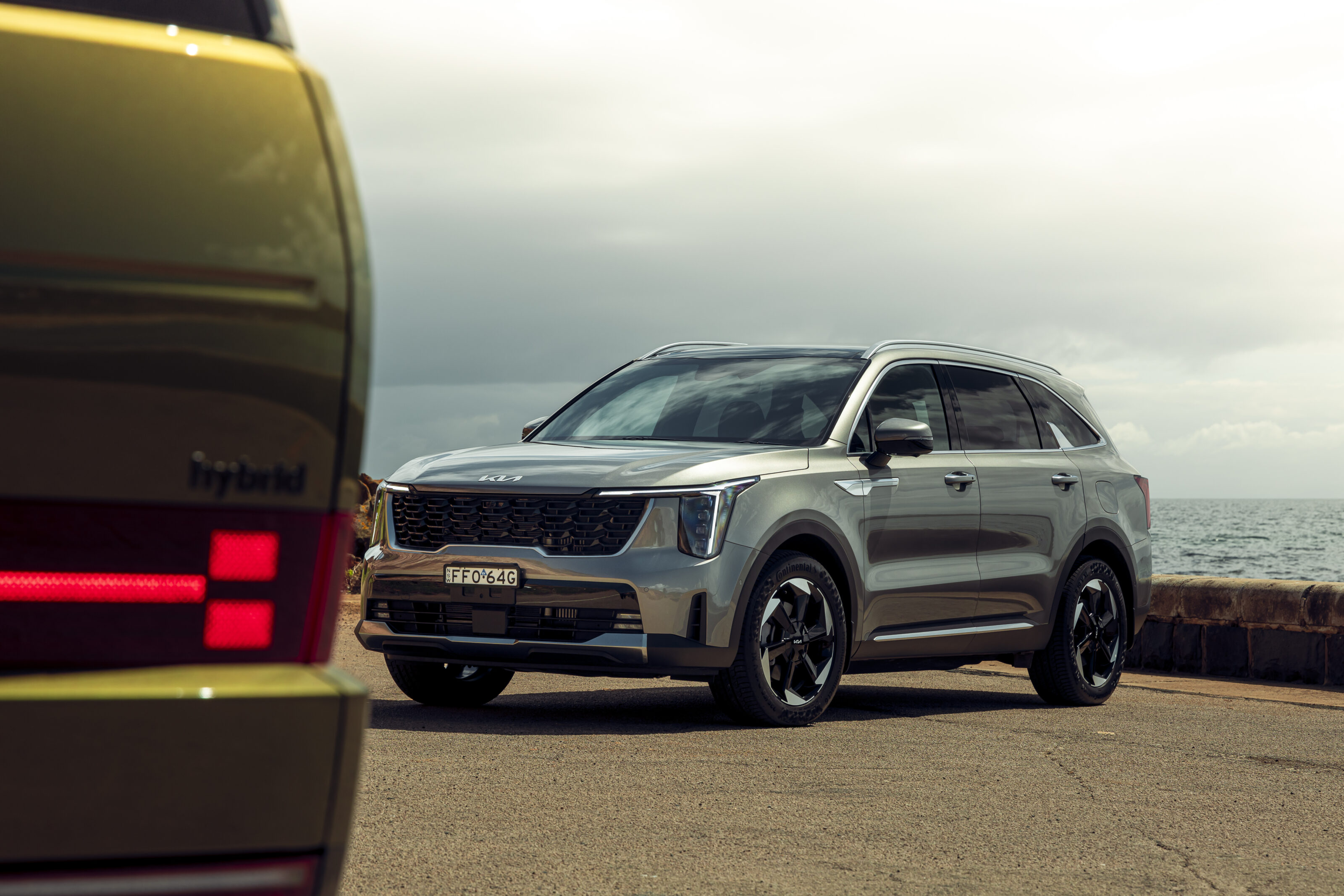
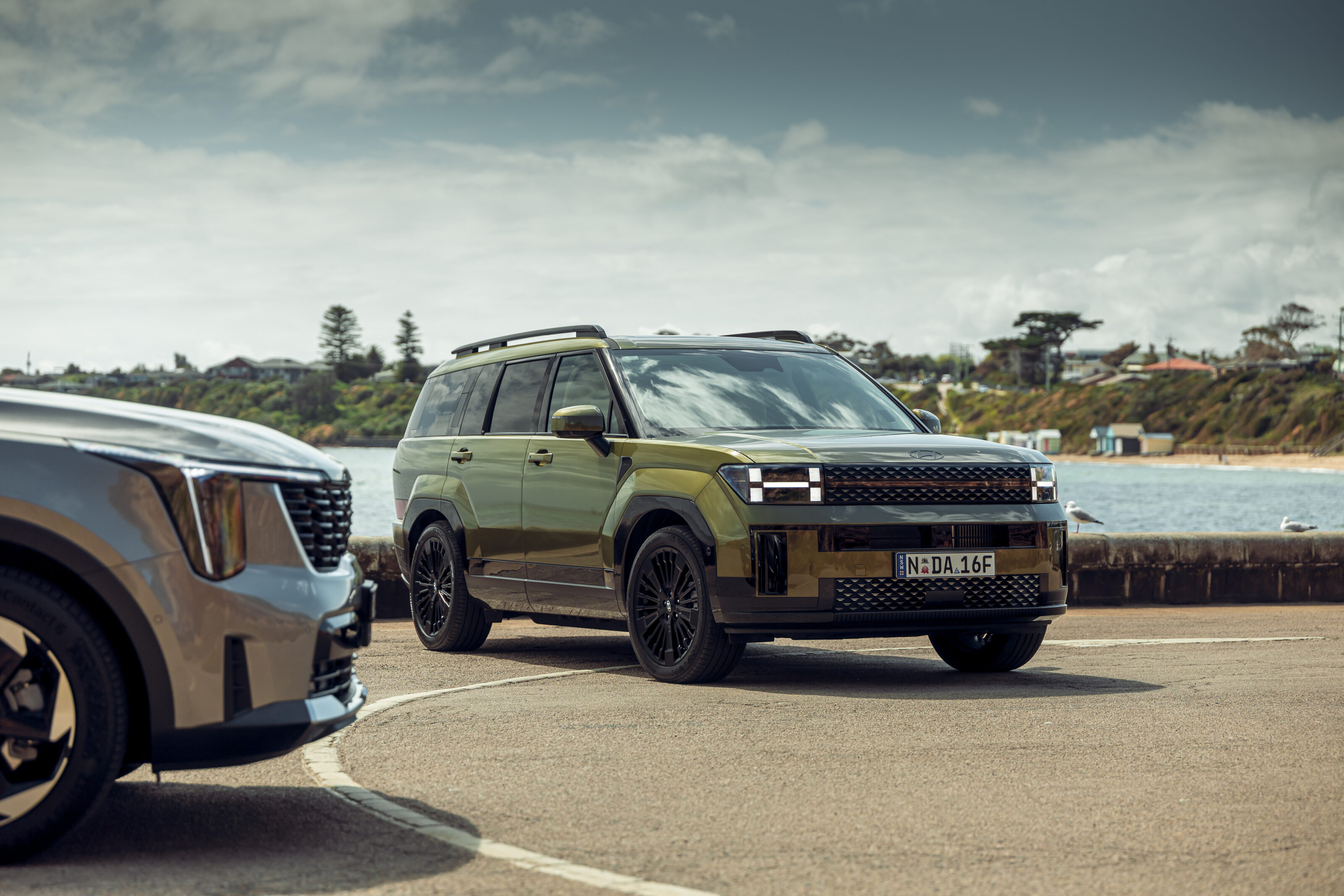
Okay sure, not everyone loves the bold new look (the rear is especially polarising) but there’s no denying this new Santa Fe is a statement piece. The kind of SUV you park proudly on the driveway for your neighbours to see, rather than slinking it into the garage at night. Is there another mainstream seven-seat family SUV that offers such visual clout? Well yes, actually. Enter the Kia Sorento.
A direct sibling to the Hyundai – this pair share their underpinnings, powertrain, interior tech and basic dimensions – the Sorento scored a recent facelift that brought a host of improvements to its chassis and interior.
It also included an exterior redesign and while its handsome proportions remain unchanged, the 2024 Sorento now has a fresh new face and an angular, almost Volvo-like LED lighting signature.
So they’re both adventurous, striking and, dare we say it, desirable, but which of these family haulers is best? To answer that question, we’ve opted to test hybrid versions of each contender, which has pushed the price point of this test into the $70K bracket. You can buy a hybrid-powered Santa Fe for $55,550 before on-road costs, but for now, Kia has reserved its fuel-saving powertrain for the flagship GT-Line model grade, which retails for $73,990 in all-wheel-drive guise. To ensure a level playing field, we’ve nabbed a top-spec Santa Fe Calligraphy AWD which costs $1010 more than the Kia at $75,000.
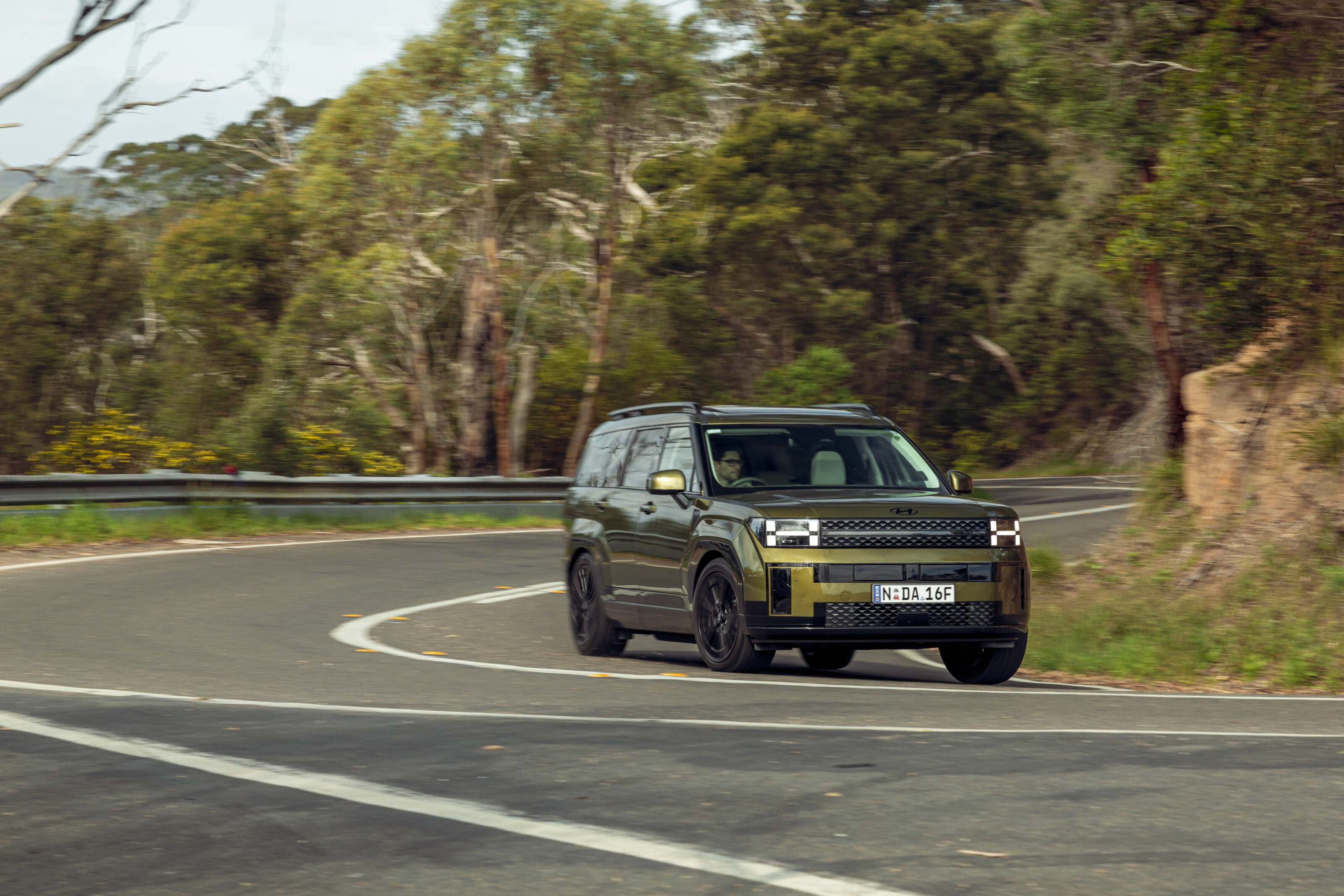

Being directly related means this pair share a lot of their core DNA. The hybrid engines, for example, are identical and combine a punchy 1.6-litre four-cylinder turbo-petrol with a 44kW electric motor fed by a small 1.49kWh battery pack. The appeal in going hybrid is obvious. With combined outputs of around 170kW and 350Nm (the on paper figures vary slightly, with the Hyundai’s 172kW/367Nm just trumping the Kia’s 169kW/350Nm), the promise is these SUVs will provide the best of both worlds – the response and refinement of a petrol engine with the economy and range of a diesel. With a full tank of 91-octane regular unleaded, both of these family SUVs will get close to 900km on a leisurely run.
Dimensionally, there’s only a cigarette paper between them, too. The Hyundai is 15mm longer and a sniff taller thanks to the Calligraphy’s roof racks but their key hardpoints, and 2815mm wheelbases, are identical. Even their stock kerb weights are lineball at around 2000kg.
But for all their similarities, it’s the Hyundai that makes the strongest first impression when you jump inside the cabin. It feels amazingly premium in here. Our car has a cream and green two-tone interior and the layout is so modern and spacious that it feels like a luxury product, not a humble mainstream family SUV.
Again, there’s a strong influence from Land Rover in the design – even the steering wheel is eerily reminiscent of a Range Rover’s four-spoke wheel – and there isn’t a single Hyundai badge in sight. Instead, you score a sleek horizontal badge with four dots, which is Morse code for the letter H.


After the initial sense of plushness, you realise it’s a cabin that majors on two things: technology and storage. Two wireless charging pads adorn the top of the centre console, the centre screen is enormous, and a large head-up display and wireless Apple CarPlay/Android Auto are standard. The digital dashboard is the same twin-screen unit you get in the Sorento and it’s excellent in both cars with clear graphics, fast response times and a dense but logical menu structure.
Front storage is superior in the Hyundai, though. Unlike the Kia, which has a chunkier centre console, the Santa Fe has an extra storage cubby between the knees of the front passengers. The lidded centre bin at your elbow is also cavernous (it’s twin-hinged so it can be accessed by those in the front and the back) and there are two glove boxes, including one with a UV-C function that can sterilise items like your phone and keys.
There’s a useful shelf for small items between the two gloveboxes, too, which you don’t get in the Kia, and while the door pockets are on the skinny side, they’ll swallow a basic 600ml water bottle. Speaking of cupholders, there are 16 inside the Santa Fe which, apart from seeming like overkill, is four more than you get in the Sorento.
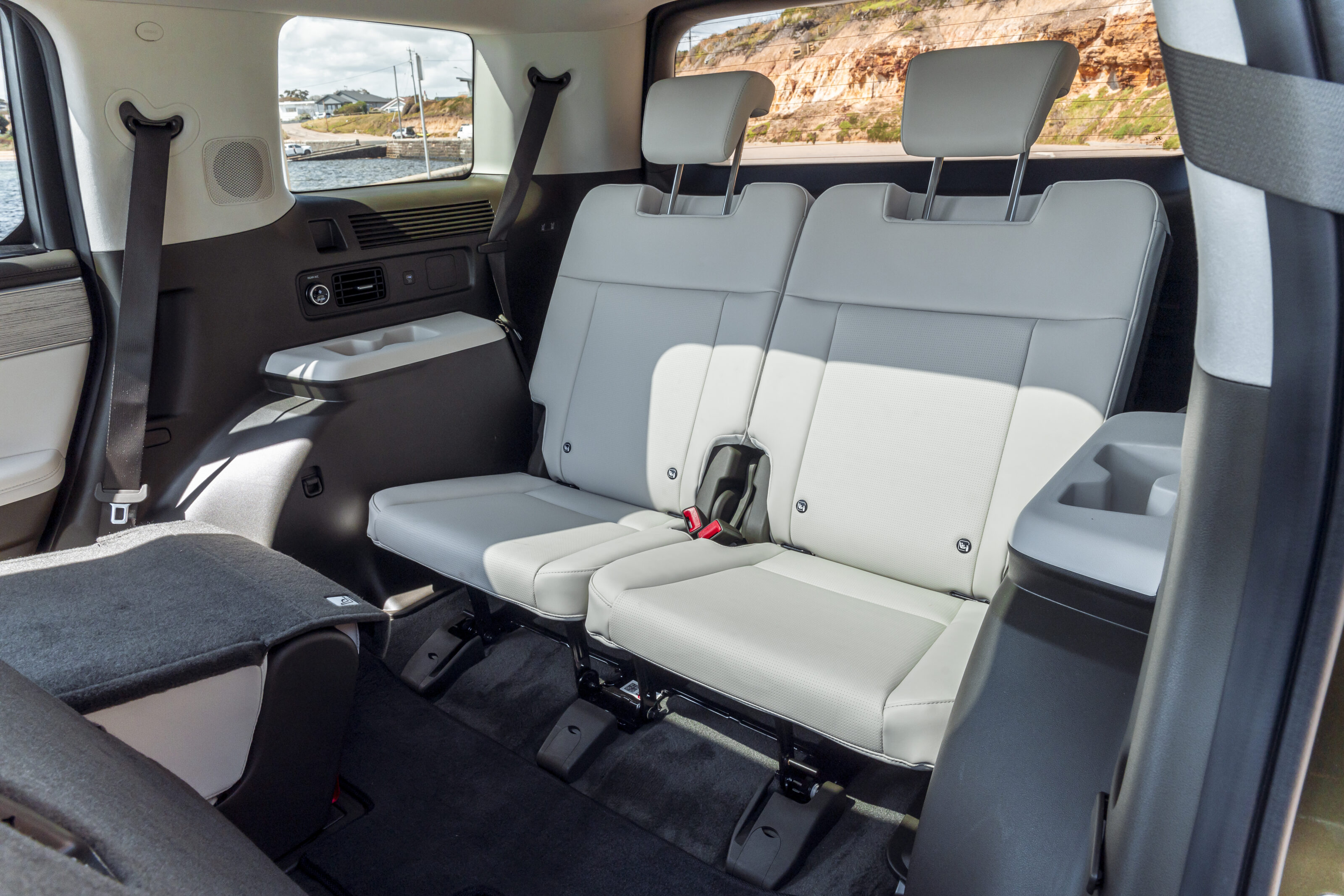
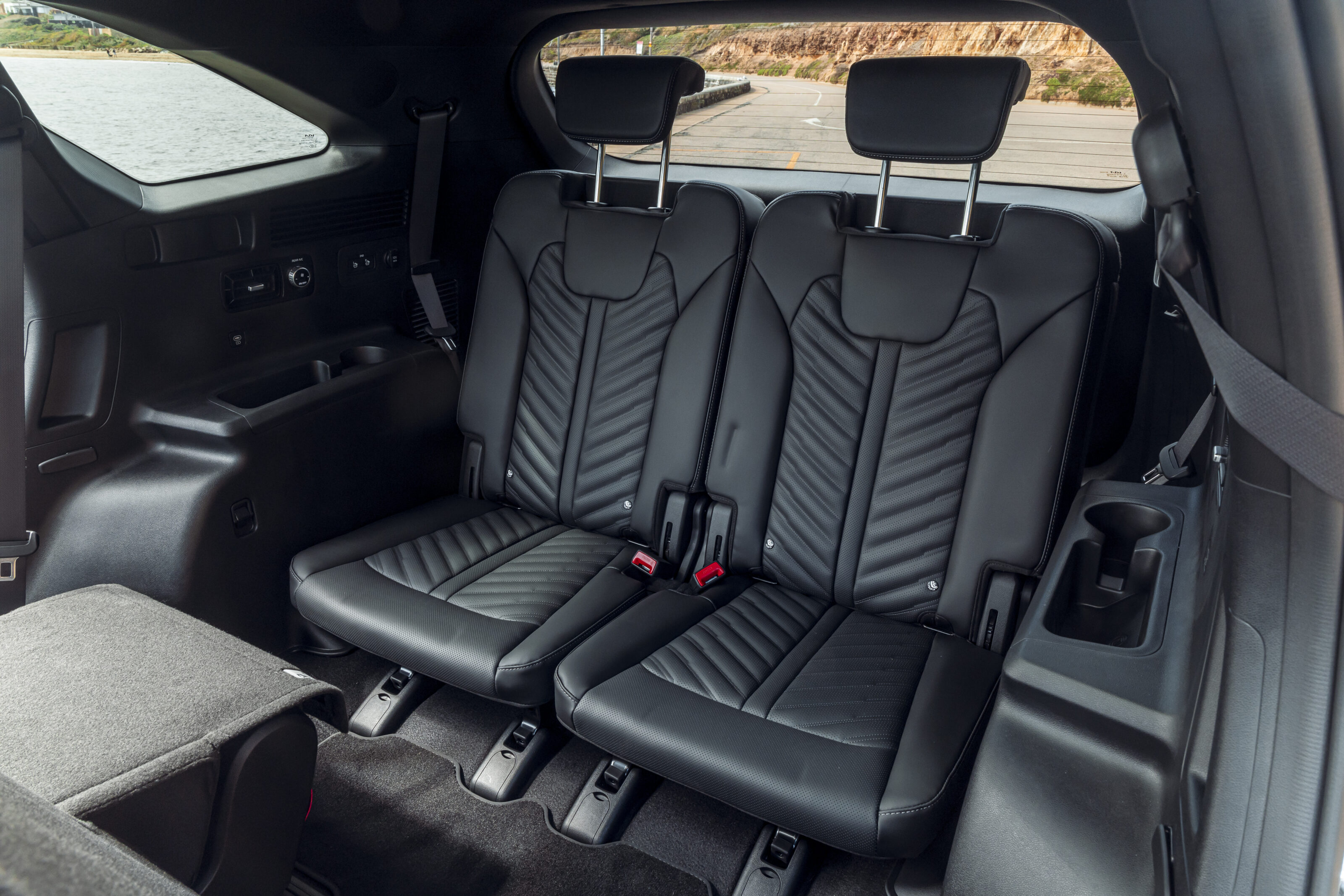
Seat comfort is superb and Hyundai has also struck a nice balance between physical and digital controls. There are knobs to adjust the temperature and volume but one minor complaint is the black touch panel that controls functions like the fan speed and heated/cooled seats soon looks ugly with fingerprints. Some of the cabin materials also feel a touch thin and plasticky but, ultimately, the Santa Fe’s cabin does a fabulous job of making you feel like you’re in a Range Rover. For half the price.
In contrast, the Sorento’s interior is instantly a much darker and more sombre place to sit. There’s still plenty of personality in the cabin design, though, and the recent facelift has done wonders in making the Sorento feel modern and contemporary. Where the old Sorento’s small centre screen, USB-A outlets and wired Apple CarPlay connection were beginning to betray its age, the tech offering in the 2024 model is bang up to date. Given their shared hardware and software, there’s little to separate the Kia and Hyundai for tech and connectivity, although the Sorento makes do with one wireless charging pad compared to the Santa Fe’s two.
Cabin space and storage also aren’t quite as generous in the Kia. And it can’t compete for sheer X-factor. The steering wheel design is more basic and while the Hyundai’s interior trim can feel insubstantial in places, it’s easier to find hard, shiny plastics in the Kia. There’s a greater use of piano black trim in the Sorento, too.
It’s a similar story in the second row. Climb into the Hyundai’s back seat and it’s the sense of space that strikes you first. The cushion has a high base, which is great for kids to get a better view out, and it’s amazingly feature rich back here. There are dual cupholders on the door cards, which will double as useful storage cubbies for your kids’ snacks and toys, and you score retractable window blinds, twin USB-C outlets, multiple coat hooks, and three-stage heated seats.
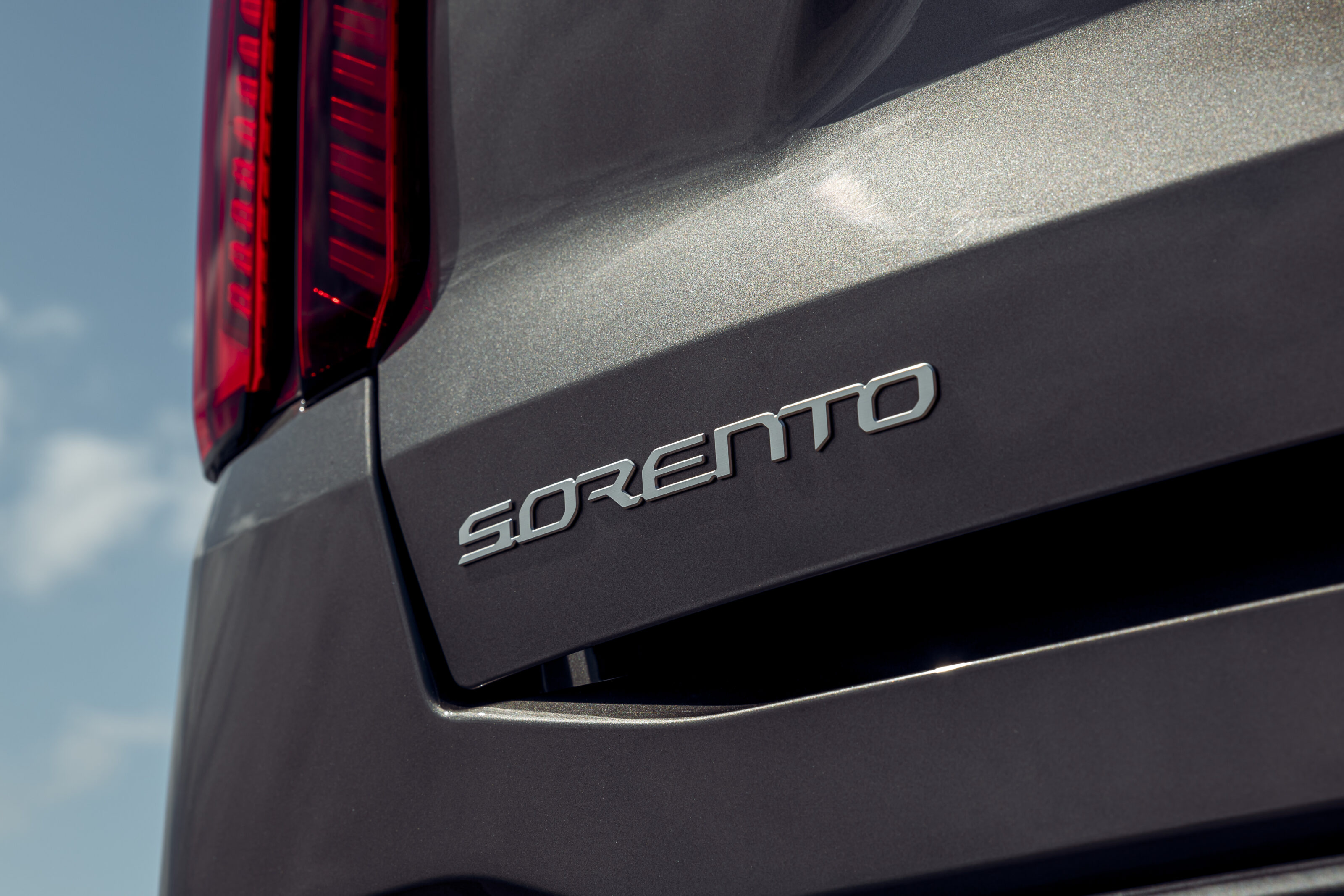
Six-foot adults will find they have ample knee, shoulder and head room, and there’s plenty of flexibility thanks to a sliding bench seat and an almost flat floor with no intrusive transmission tunnel. Ventilation is also excellent courtesy of face-level air vents in the B-pillars.
Things aren’t quite as good in the Sorento’s middle seat. While you get the same sliding bench and most of the same creature comforts (the air vents are in the back of the centre console rather than the B-pillar), you miss out on the coat hooks, there are only two stages for the heated seats compared with three, and there’s only one cupholder in the top section of the door card rather than two.
Third-row access is also superior in the Hyundai. Its boxier design and upright C-pillar mean the gap you have to clamber through is larger, and while both SUVs can carry adults in the rearmost pair of seats, the Hyundai has more headroom and offers features such as an adjustable backrest angle.
The Hyundai extends its growing advantage when it comes to boot space. While there’s little to separate them for sheer volume and amenity (the Hyundai has 628 litres of cargo capacity behind the second row compared to 608 in the Kia), the Santa Fe has a noticeably lower loading lip.
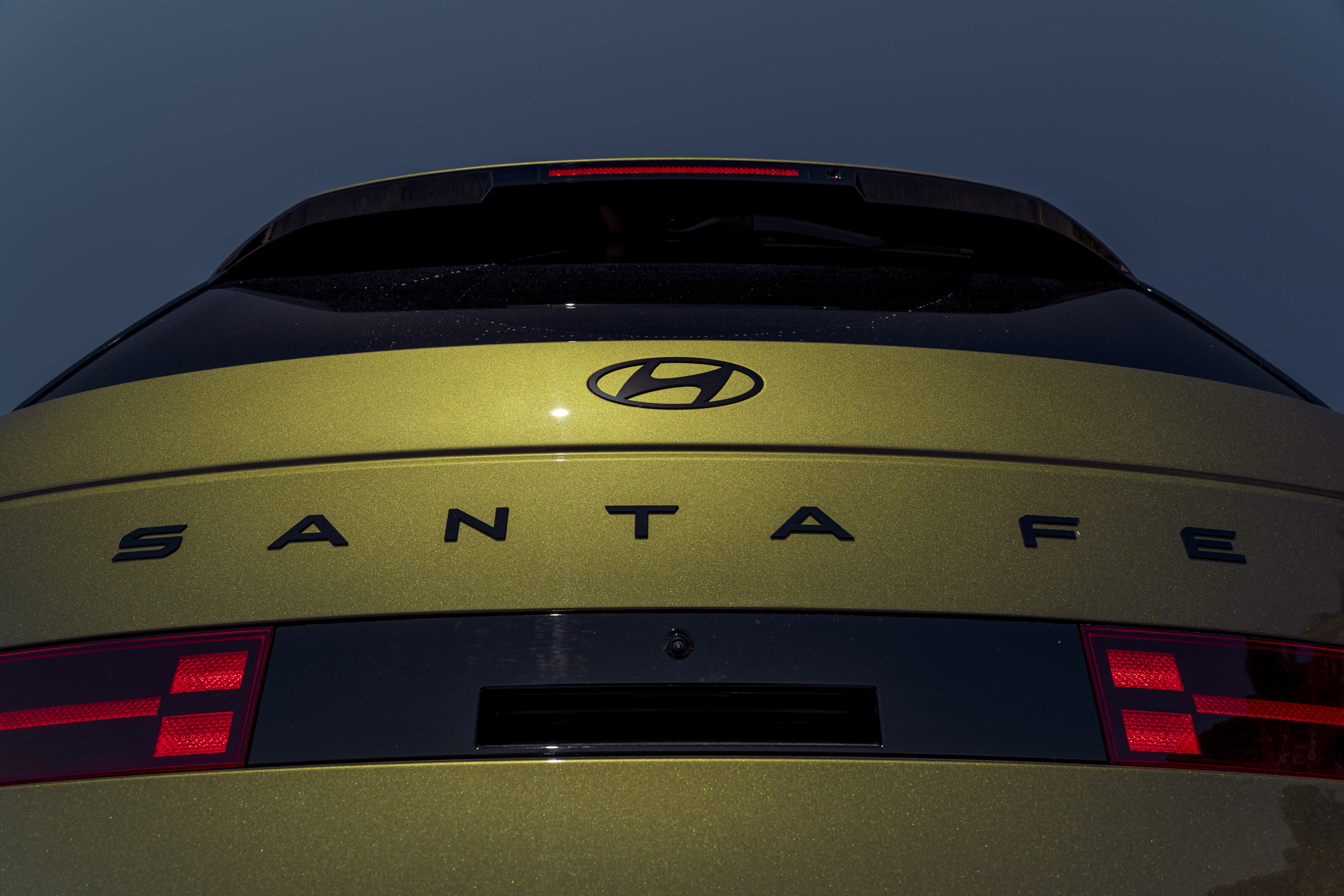
If it feels as though we’re splitting hairs to separate this pair, you’re bang on – their core attributes are remarkably similar – but one area where they’re distinctly different is how they drive.
The Kia is more car-like. Its thinner-rimmed steering gives you a firmer initial handshake and the ride on 19-inch alloys, which has been fine-tuned for Aussie conditions, is more locked down. Kia’s local chassis team has fitted the updated Sorento with specially developed dampers and the result is a large SUV that offers greater control, improved NVH, and a level of dynamic engagement that makes it genuinely fun on a winding road. The trade off is passengers can be jostled around a little more on broken back roads, but in most scenarios the Sorento strikes a commendable balance between ride comfort and control.
The Hyundai is softer and waftier. Its steering is lighter and less connected, and the wheel itself is also thicker, which contributes to a sense of distance between you and the road surface. Body roll is more noticeable, too, and on twisty roads the Hyundai doesn’t have the damping control of the Sorento, so it’s not as engaging. It’s still impressively capable for a near two-tonne seven-seater, though. Push through the steering’s vagueness and the Santa Fe displays a level of dynamic competence that’s surprising for such a big vehicle.
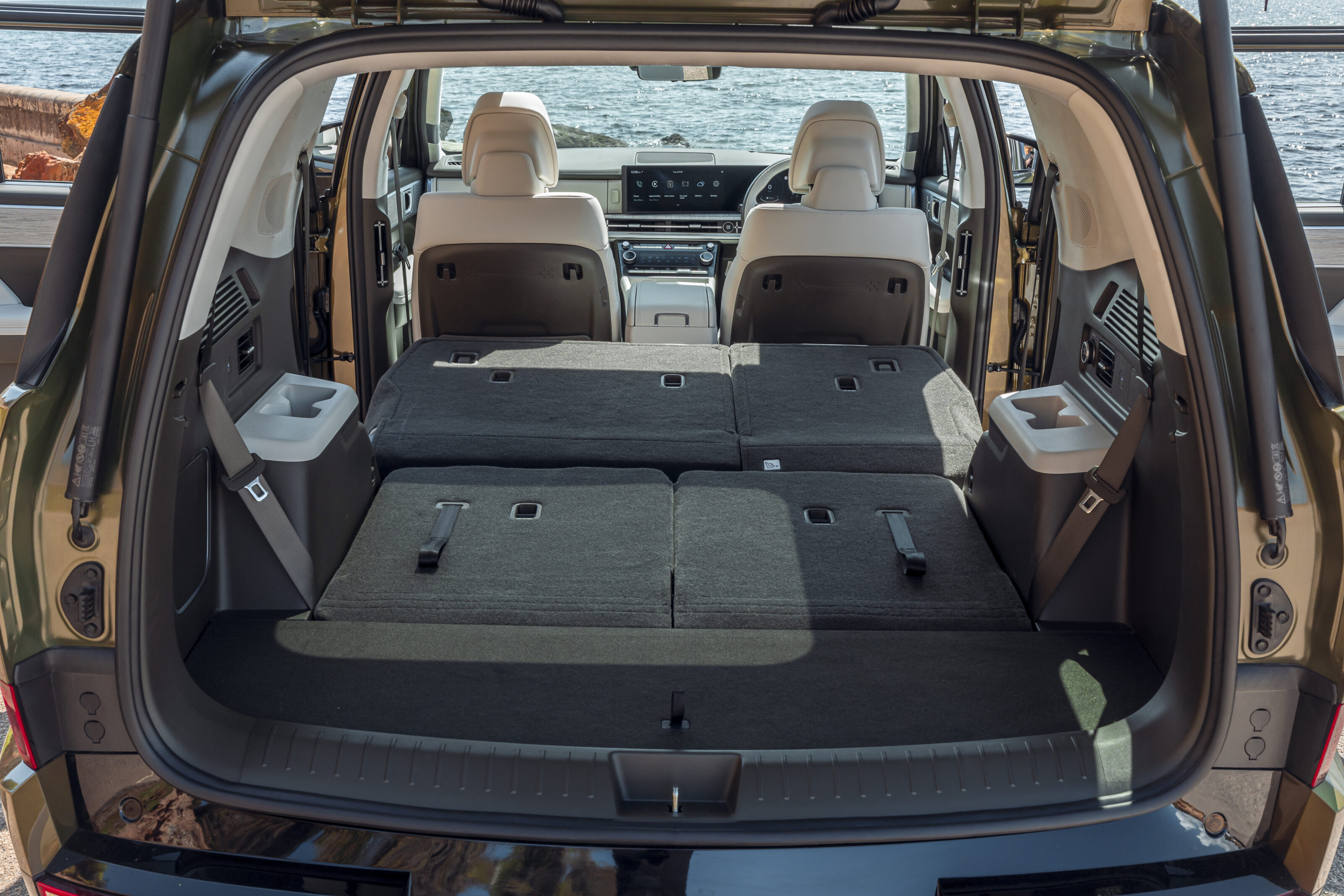
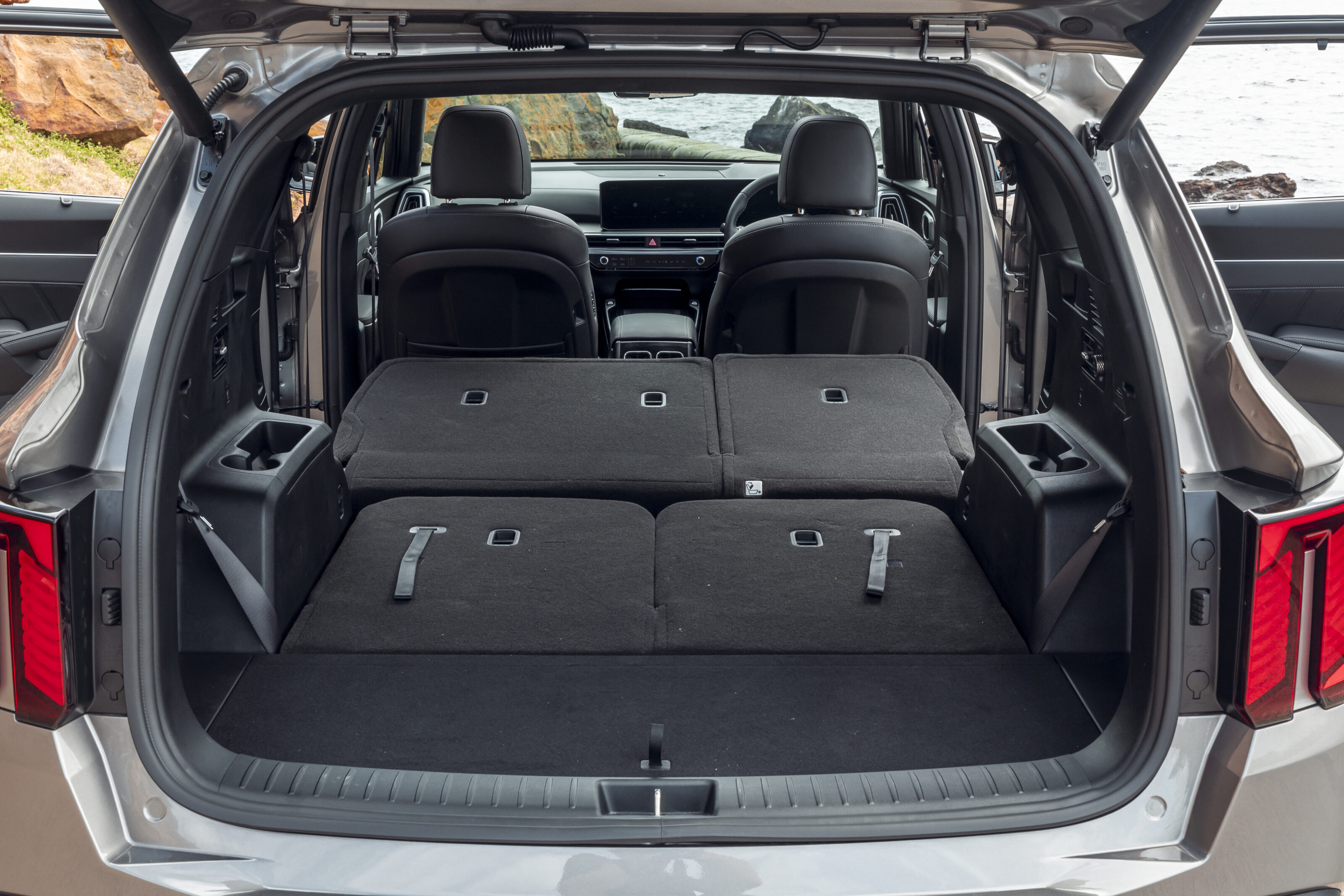
You might fear that 1.6-litres isn’t enough to propel a vehicle of this size but the performance, response and refinement of the powertrain is commendable in both SUVs. There’s ample grunt for easy overtakes and you also score three levels of regen’ braking which you adjust via the steering-wheel paddles. The engine is better isolated in the Hyundai, however. On a constant throttle at around 3500rpm, the Sorento’s turbo-petrol can be a touch vocal. As for fuel economy, there’s nothing to split them with the Santa Fe returning 7.1L/100km over our test loop compared with 7.2L/100km in the Sorento.
Still, against the scorecard it’s a clear win for the Hyundai. As an all-new generation vehicle it’s half a step ahead of the Sorento in its life-cycle and it feels it. But the margins between this pair are so small that it’s easy to recommend both. A Toyota Kluger hybrid feels noticeably less polished by comparison, so really the decision will come down to which of this duo you like the look of more. Either way, you can’t lose.
Hyundai Santa Fe
IF YOU desire colour and flair in your interiors then you’re going to adore the Santa Fe Calligraphy in two-tone Forest Green or Pecan Brown. It’s Range Rover-rivalling for a fraction of the price. Both front seats get ‘relaxation’ recline function with electric ottomans. There’s also dual wireless charging pads (plus wireless smartphone mirroring) and double-deck centre console storage, though door bins are comparatively stingy. Vision, refinement, ride comfort and seat support all excellent, with superior third-row access to Sorento thanks to upright C-pillars. Some lower plastics betray Hyundai’s cost-consciousness, yet they’re hardly worth criticising – this interior sets a new benchmark for large mainstream SUVs.
| Price | $75,000 |
|---|---|
| Engine | 4cyl, dohc, 16v, direct injection, turbo |
| Electric motor | 4/5 |
| Battery | 1.49kWh lithium-ion polymer |
| Layout | Front-engine, all-wheel drive |
| Capacity | 1598cc |
| Power | 172kW @ 5600rpm |
| Torque | 367Nm @ 1000-4100rpm |
| Transmission | 6-speed automatic |
| L/W/H/WB | 4830/1900/1770/2815mm |
| Track (F/R) | 1637/1647mm |
| Weight | 1990kg |
| Boot | 628 litres |
| Fuel tank | 91 RON/67 litres |
| Economy | 5.6L/100km (combined), 7.1L/100km (tested) |
| Suspension | Front: struts, A-arms, anti-roll bar Rear: multi-links, coil springs, anti-roll bar |
| Steering | Electric power-assisted |
| Front brakes | Ventilated disc (325mm) |
| Rear brakes | Ventilated disc (325mm) |
| Tyres | Kumho Ecsta PS71 |
| Tyre size | 255/45R20 105V |
| Safety | Not tested |
| Performance | 9.0sec (claimed) |
| Verdict | 9.0/10 |
Kia Sorento GT-line HEV
OLDER KIA INTERIOR clearly shares its hardpoints with the Santa Fe (such as door handle and armrest placement), as well as its curved dual 12.3-inch screen set-up. While everything works impressively well, it does feel a generation older, and a slight step down in terms of switchgear slickness and control layout. GT-Line’s beautifully quilted Nappa leather seats only come in sombre charcoal, though Sorento’s larger single-pane panoramic sunroof (with electric blind) lets in plenty of light. Thinner-rimmed steering wheel guides a sportier driving experience, with sharper handling, tighter body control, though both are great to drive. And difficult to separate apart from the way they look.
| Price | $73,990 |
|---|---|
| Engine | 4cyl, dohc, 16v, direct injection, turbo |
| Electric motor | Front permanent magnet synchronous |
| Battery | 1.49kWh lithium-ion polymer |
| Layout | Front-engine, all-wheel drive |
| Capacity | 1598cc |
| Power | 169kW |
| Torque | 350Nm |
| Transmission | 6-speed automatic |
| L/W/H/WB | 4815/1900/1700/2815mm |
| Track (F/R) | 1637/1647mm |
| Weight | 1972kg |
| Boot | 608 litres |
| Fuel tank | 91 RON/67 litres |
| Economy | 5.7L/100km (combined), 7.2L/100km (tested) |
| Suspension | struts, A-arms, anti-roll bar Rear: multi-links, coil springs, anti-roll bar |
| Steering | Electric power-assisted |
| Front brakes | Ventilated disc (325mm) |
| Rear brakes | Ventilated disc (325mm) |
| Tyres | Premium Contact 6 |
| Tyre size | 235/55R19 105V |
| Safety | (2020) |
| Performance | 9.0sec (claimed) |
| Verdict | 8.5/10 |
Hang on, what about Kluger?
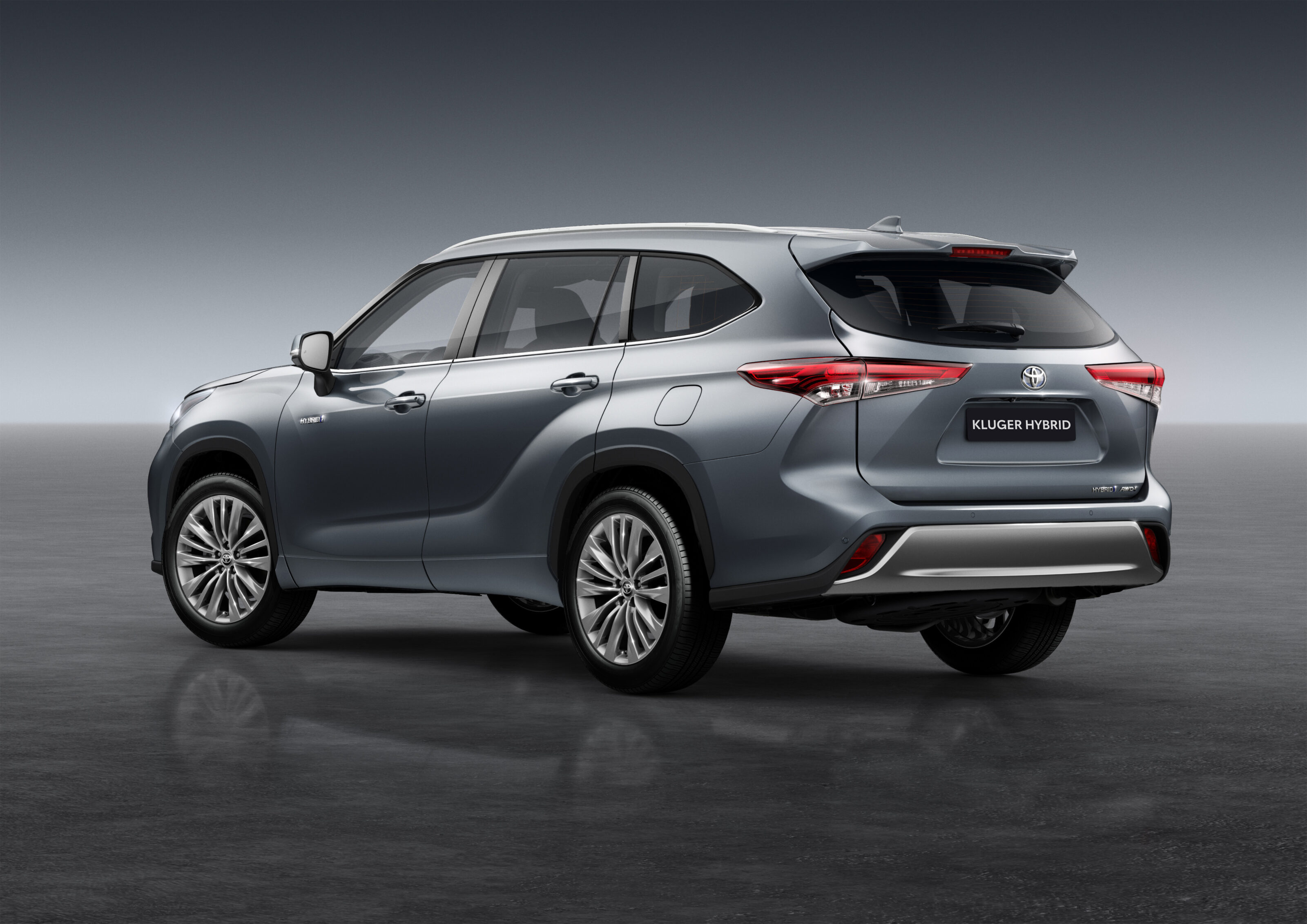
If you’re in the market for a large seven-seat SUV with a hybrid powertrain then chances are you’re considering a Toyota Kluger. It’s easily the most popular contender in this class, but how does it compare? Well, it’s more expensive. A flagship Kluger Grande AWD is $80,230 before on-road costs, which makes it more than $5000 pricier than an equivalent Santa Fe or Sorento. You do get more capacity and power in the Toyota, though, with its 2.5-litre hybrid powertrain churning out 184kW. And you’ll still get impressive fuel consumption thanks to an official 5.6L/100km economy figure which is near identical to the Sorento (5.7) and Santa Fe (5.6). As for what’s missing? Despite solid bones, the Toyota can’t match the Kia and Hyundai for visual drama, richness of design or feeling of expense.
This saddens us. If you tried to hazard a guess at the sales split between the Mazda6 and the Mazda CX-5 SUV last year, what do you think it’d be? Well, we know that the SUV is going to be more popular, so let’s wing in with an extreme first stab. One Mazda6 sold for every 10 CX-5s? Not even close. It’s nearer one in 17 which is why, along with new ADR regulations, Mazda has quietly deleted the 6 from its local line up.
It’s all a far cry from the heady days of 2005 when Mazda couldn’t get enough cars to satisfy the demand from Australia. Nearly 15,000 cars found owners Down Under that year, helped by the fact that Mazda only sold one fairly unappetising SUV.
Fast forward to 2015, and the third-gen (GL) version of the Mazda6 was shifting over 5000 units per year, helped by a spec upgrade with the MZD Connect infotainment system and additional safety gear included in the i-ActiveSense suite. Mazda was still clearly invested in its flagship passenger car.
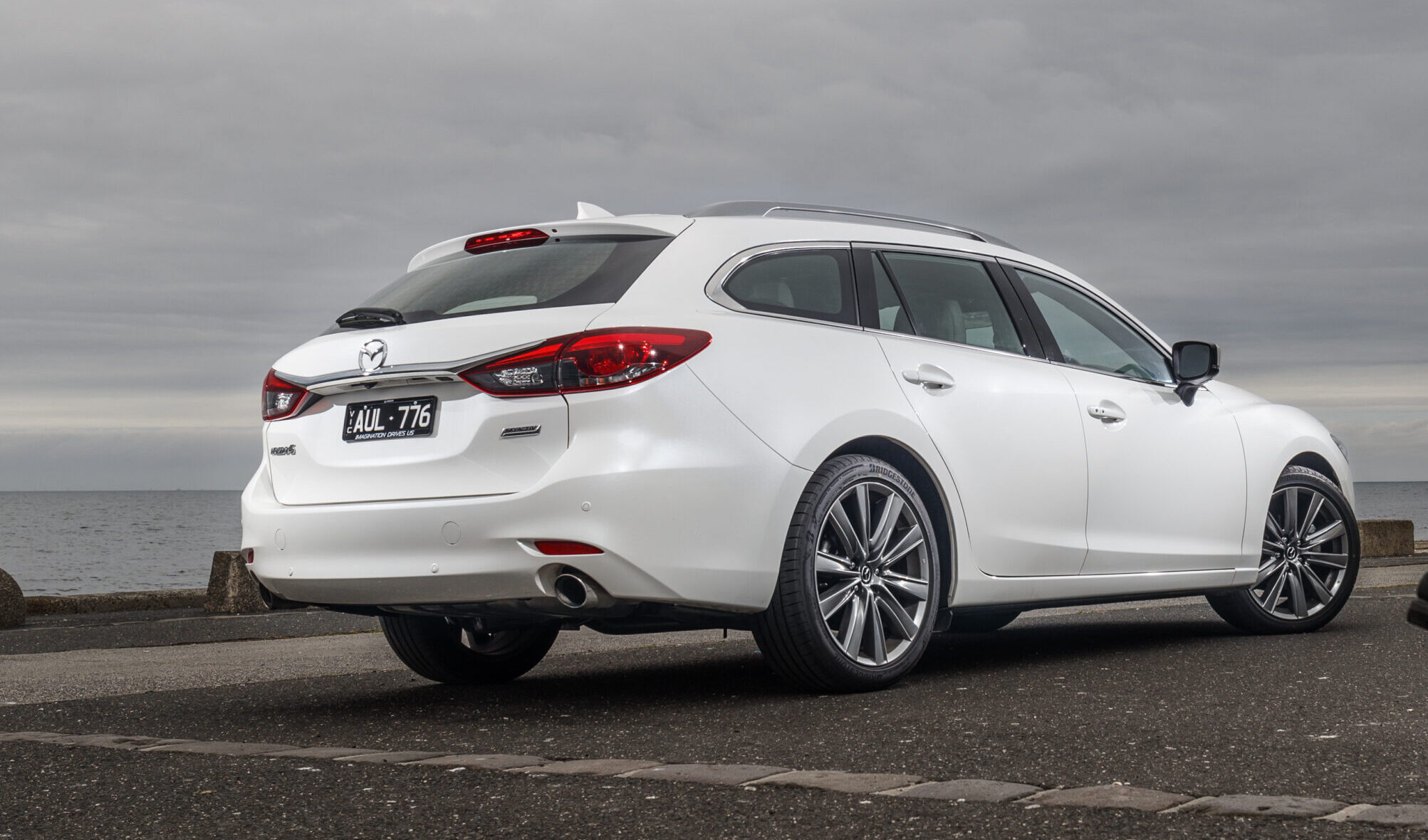
It wasn’t to last though. A decade ago, the writing was already on the wall for the traditional sedan and wagon. The CX-5 was selling five times the numbers of the Mazda6, and the Hiroshima company had backup in the form of the CX-3 and the big CX-9. Buyer tastes had changed decisively, but since when did fashion have a great deal with common sense?
Wheels attempted to make sense of what was then a fairly crowded field when it threw the Mazda6 GT sedan in against nine rivals in the September 2016 issue, but it became clear that we’d chosen the least competent 6 to pitch into the fray. While the diesel wagon excelled, the GT sedan’s big wheels, long wheelbase and so-so economy of its atmo 2.5-litre petrol engine saw it only manage seventh spot. Nathan Ponchard even reckoned the diesel was more refined than the petrol unit.
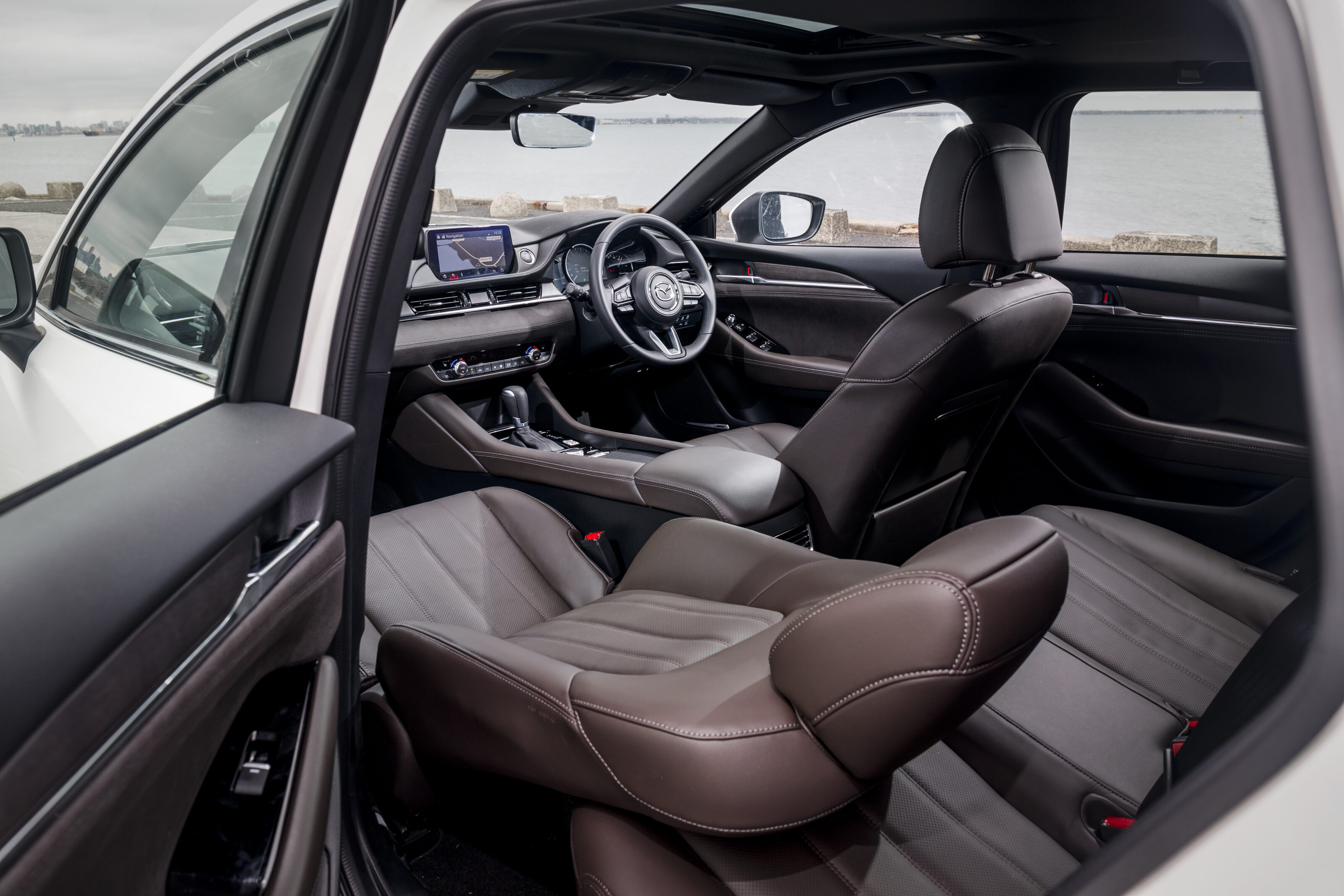
So it’s fair to say that the GL-generation Mazda6 was a car that was extremely spec-dependent. Many of the medium-rangers that we put it up against have, in the interim, taken their leave of the Aussie market. We can no longer buy a new Ford Mondeo, Subaru Liberty, Peugeot 508, Kia Optima, Volkswagen Passat or Holden Commodore. Timing was indeed against the Mazda6. Quite aside from the fact that it arrived just as SUVs were really starting to kick goals in the sales charts, its best version, the diesel, landed just as the market for diesel passenger cars started to plummet.
Mazda has introduced the all-electric Mazda EZ-6 in China – effectively a reskinned Deepal L07 – but the prospect of trying to sell a battery-electric sedan to Australian customers is not one that has tempted the local arm, despite some recent ‘wait and see’ statements. Even the range-extended electric version doesn’t look likely to make landfall. Scheduled to be called the Mazda6e when it goes on sale in Europe in mid-2025, it’ll get a larger 80kWh battery than the Chinese version, good for 552km WLTP range. Mazda needs all the NVES help it can get.
Mazda Australia’s hand was forced when the 6 was axed in Japan in quarter two of last year. Production continued, but hopes for a version with one of Mazda’s new-gen straight-six engines were dashed. After 22 years on sale in Australia, the final models have already left the lines, so dealer stock is your best bet if you want to snag one of the last of the last. It was a good car, but one that served as an unfortunate case study in getting your timing wrong. In truth, it probably deserved better.
The forgotten fast one
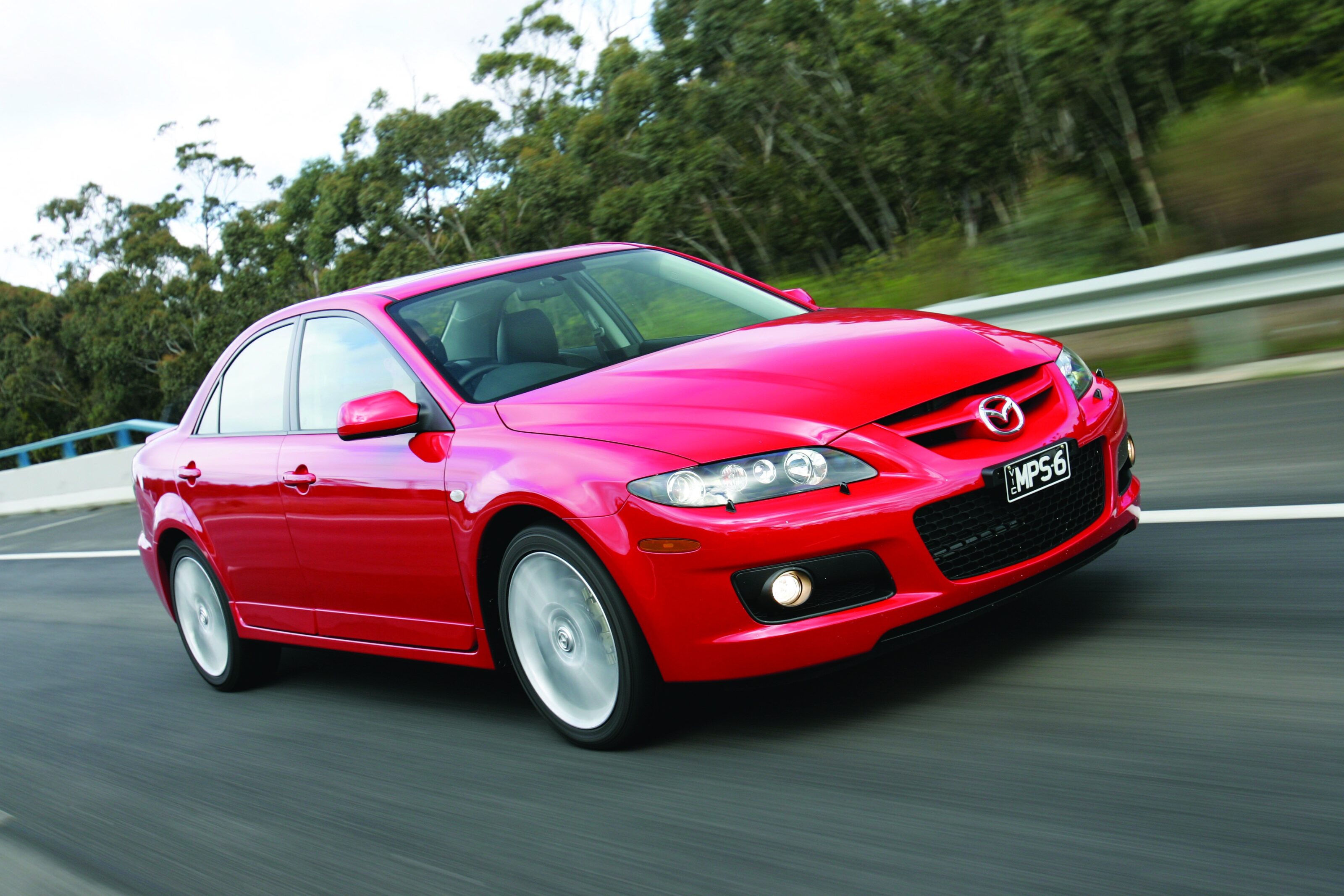
AN AWD SEDAN with a six-speed manual gearbox, 200kW at the crank, and a limited-slip differential sounds like a winner, but the Mazda6 MPS somehow seemed to emerge as less than the sum of its parts.
It saw off the Subaru Liberty GT in the only Wheels comparo it was entered into (Dec 2005), but reliability issues with the 2.3-litre four (rods, tubos, valvetrain) have seen many disappear from our roads.
Back in ’05, you’d have been better advised to sit on your $50k for a year and wait for the heavy-hitting VE Commodore SS.
Mercedes-Benz Australia has launched a new special edition based on the entry-level C-Class variant, the C 200 Sport Edition, and kicks off with special drive away pricing.
Priced from $88,400 plus on-road costs – or $600 more than the C 200 – the C 200 Sport Edition is being offered with a special $92,500 drive away price, which is around $2000 less than the C 200 depending on your state.
In addition to special pricing, the C 200 Sport Edition also adds more features, including larger 19-inch AMG alloy wheels, rear privacy glass, an AMG lip spoiler and the Night Package with gloss black exterior trimmings on the mirror housings, window line and radiator shell Louvre.
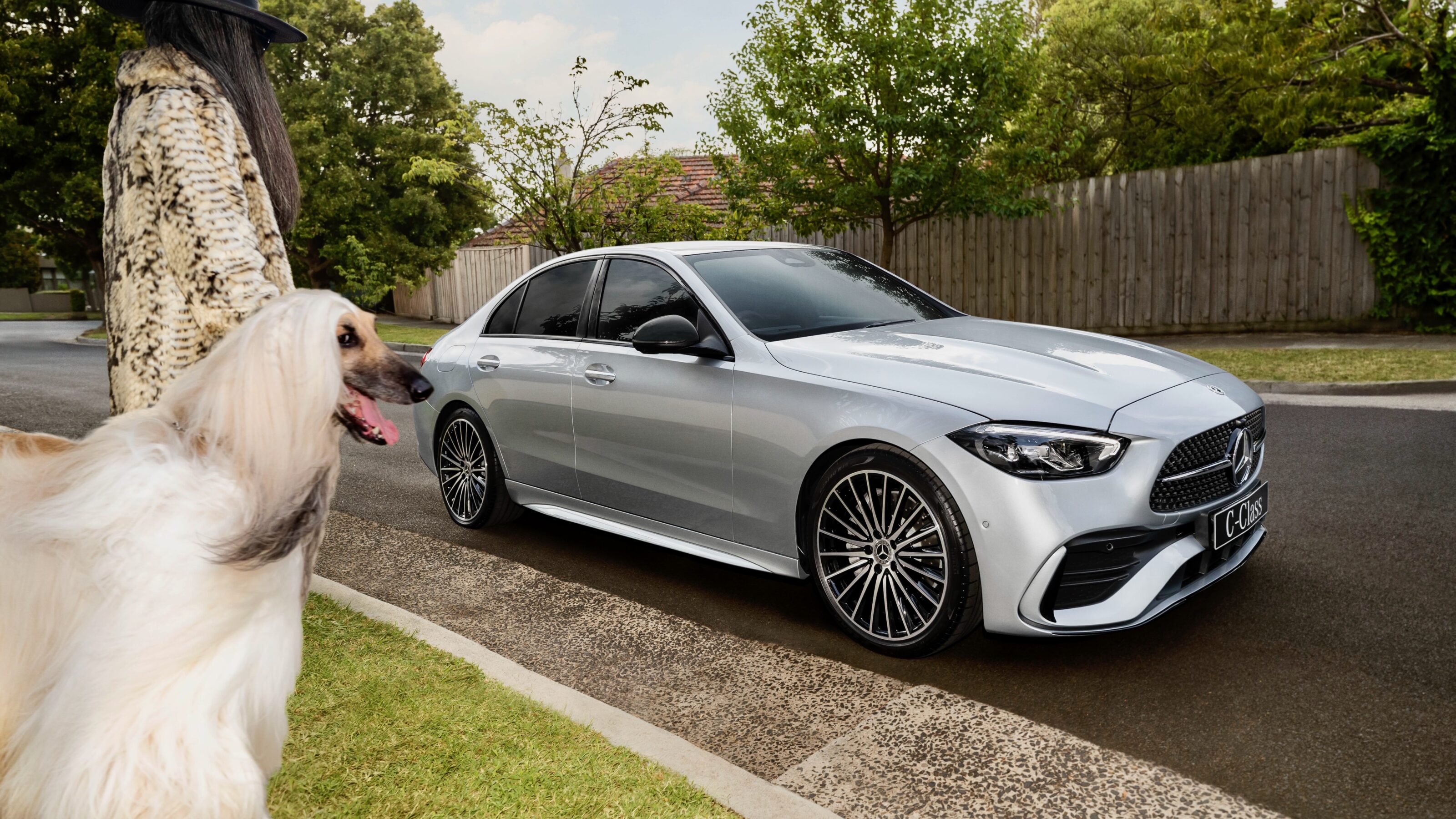
That’s on top of the regular C 200’s standard equipment, which includes heated and electric front seats with memory functionality, dual-zone climate control, an 11.9-inch touchscreen with the company’s ‘MBUX’ software, a 12.3-inch digital driver’s display, wireless smartphone mirroring and a wireless phone charger.
Adaptive high beam, a 360-degree camera, keyless entry and start with an electric bootlid, auto-folding and heated mirrors and adaptive dampers also feature as standard on the C 200.
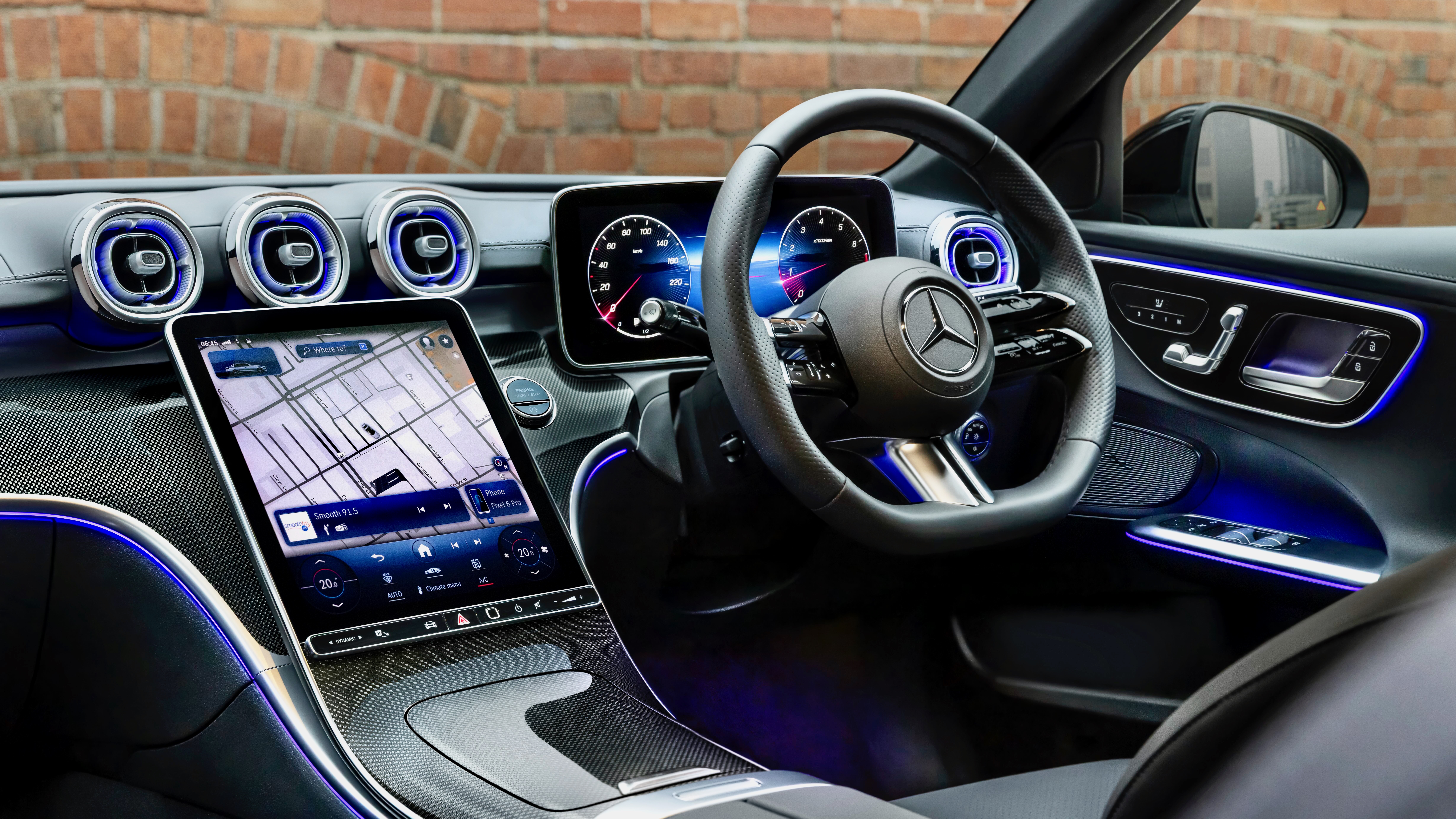
Safety equipment includes autonomous emergency braking, adaptive cruise control, automatic parking, active lane keeping assistance, blind-spot monitoring, traffic sign assist and tyre pressure monitoring.
The C 200 Sport Edition will be available in ‘High-Tech Silver Metallic’ as standard with ‘Polar White’, ‘Graphite Grey’, ‘Selenite Grey,’ ‘Sodalite Blue’ and ‘Spectral Blue’ metallic colours as no-cost options, with black, grey and brown ‘Artico’ synthetic leather upholstery options.
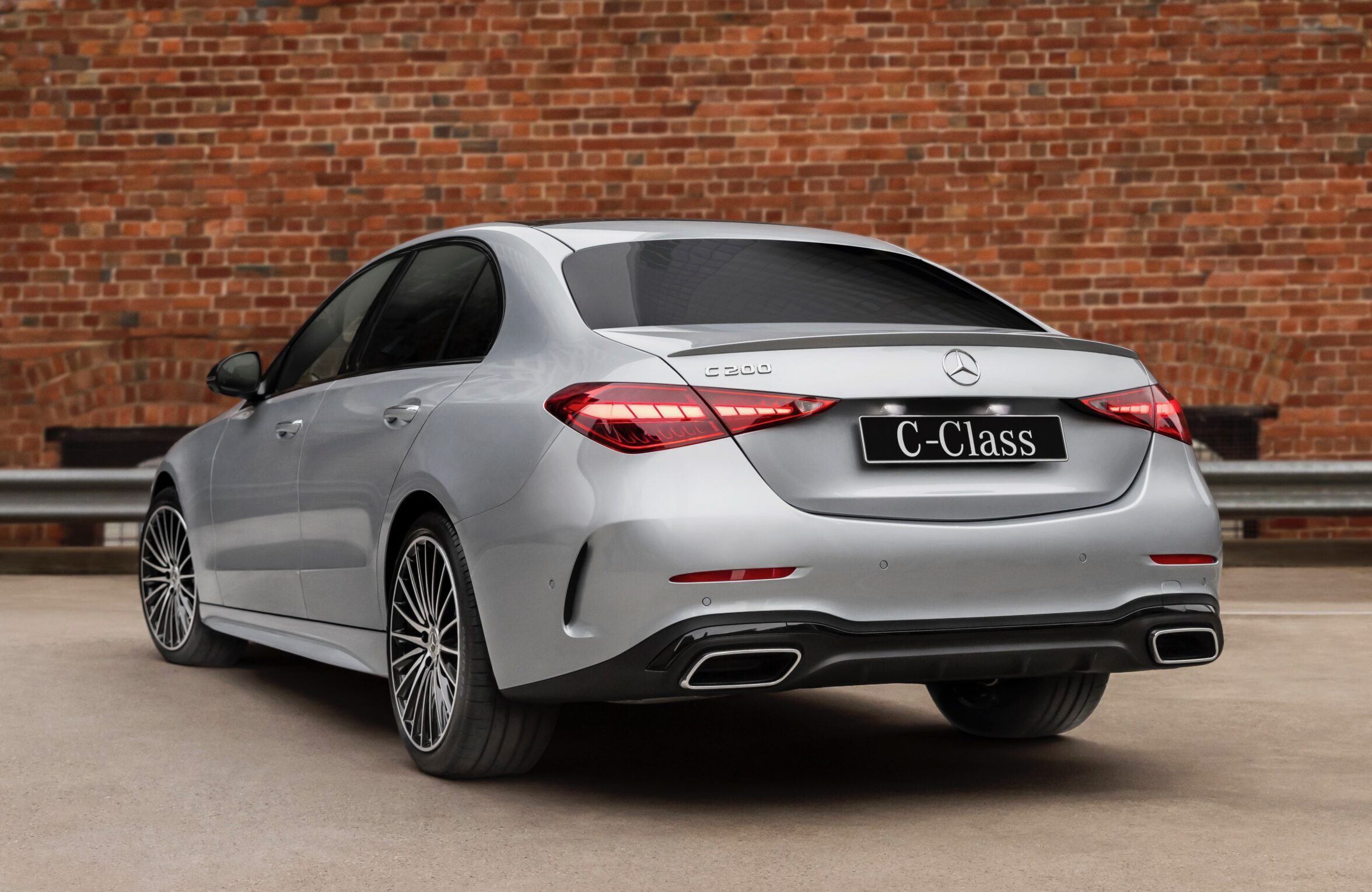
How the mighty have fallen. As recently as 2014, the Jeep Grand Cherokee was the best-selling large SUV in Australia. During that year it chalked up 16,582 deliveries, acing the likes of the Toyota Prado.
Last year, Jeep managed to shift just 645 cars locally, its worst result since 2009. On the back of this 96 per cent decline in sales, Jeep has pulled the plug on the Grand Cherokee. Parent company Stellantis Australia has taken “the difficult decision to pause availability of the current model Grand Cherokee” in order to “match local market dynamics and customer preferences”.
A statement went on to say: “While the Jeep Grand Cherokee will continue to be sold in many markets around the world, this decision allows us to focus our efforts on placing the right products in the right segments that can have the greatest relevance for our customers.”
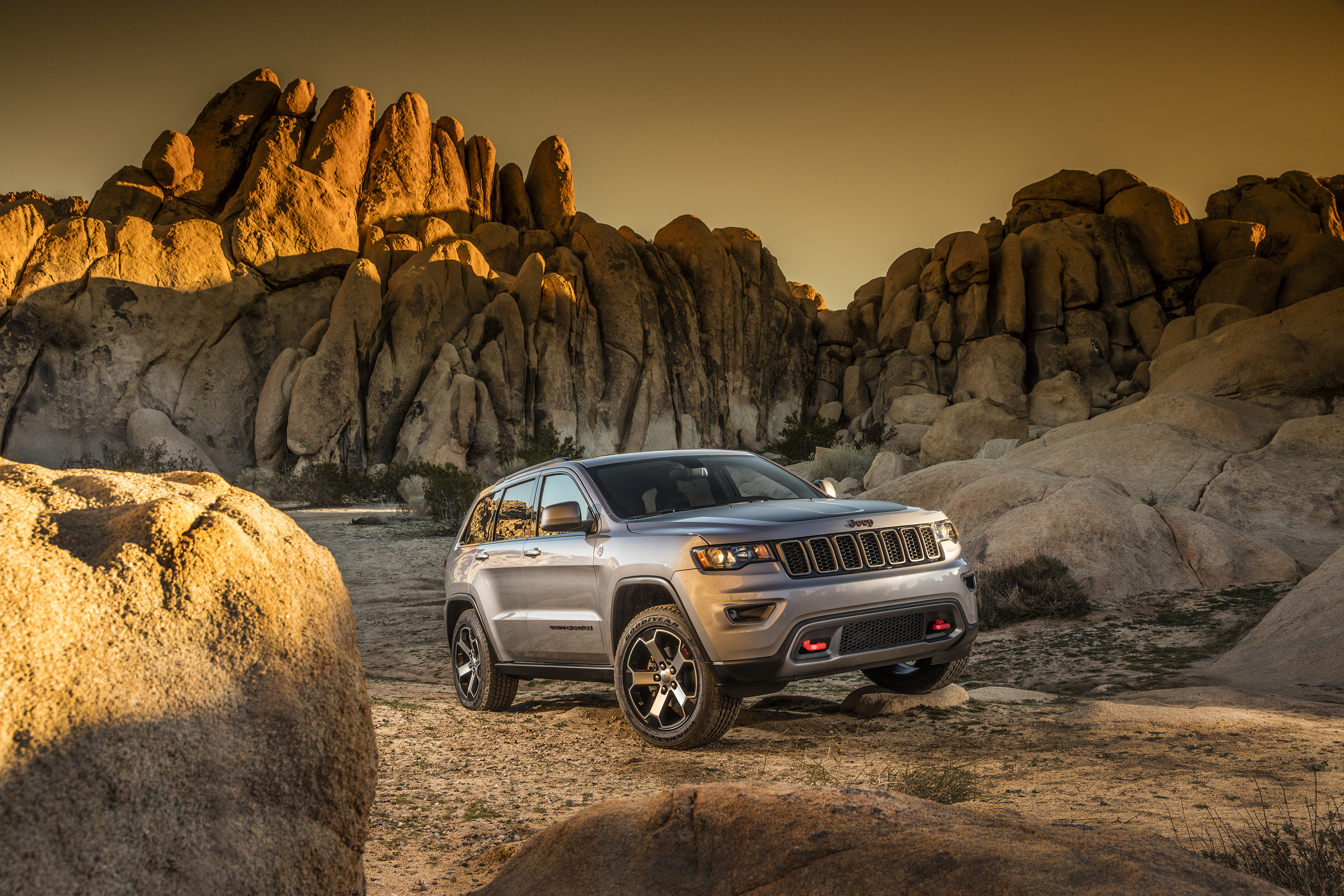
We’re not the only ones in this situation. Production of both the five-seat Grand Cherokee and the seven-seat Grand Cherokee L has ended for all right-hand drive markets. The UK, Japan, South Africa, Singapore and India will all see supply axed.
It ought to have been far rosier, on these shores at least. Quite how Jeep – a manufacturer with arguably the most storied off-roading credentials in the market – has managed to fail with the Grand Cherokee in Australia, a country that loves off-roading, adores big SUVs and has had, to date, no punitive measures on emissions is something to behold.
What’s more, it’s not as if the Grand Cherokee has been a particular weak spot in Jeep’s portfolio. In fact, it’s the second biggest seller after the Wrangler. That should clue you in to the amount of trouble the brand is in Down Under. The writing was on the wall when Jeep introduced the latest WL generation Grand Cherokee in 2023. Pricing had leapt up considerably, the rises over the outgoing model averaging around $18,000, and this in the teeth of a cost of living crisis.
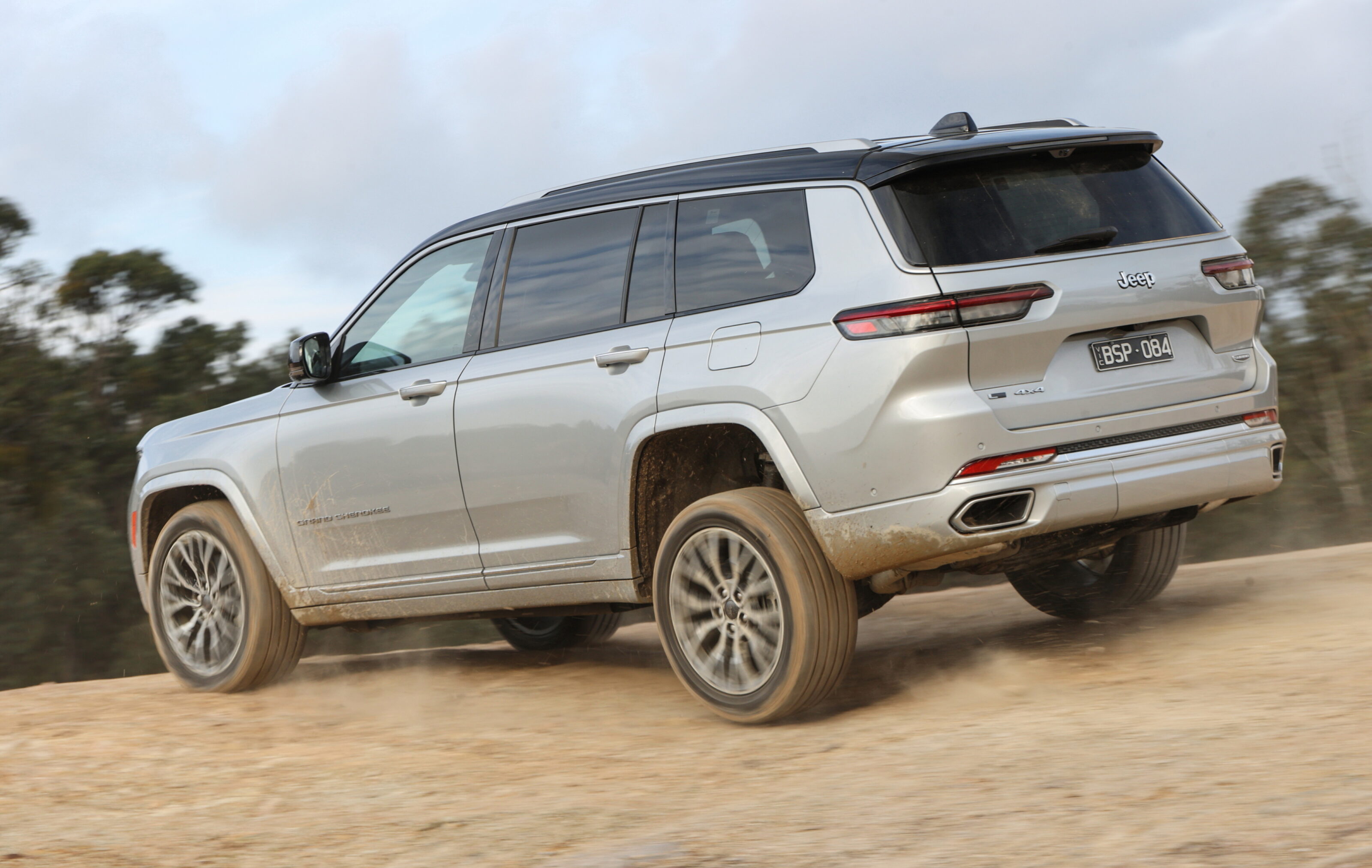
In short, the market just didn’t wear Jeep’s premium positioning for the WL. They were unimpressed by the carry-over petrol engines and the short service intervals. Customers voted with their wallets and found value instead in vehicles like the resurgent Ford Everest and Mazda’s plush CX-90, or else they sat on their money waiting for the box-fresh Toyota Prado to launch.
Jeep responded, belatedly slashing prices of the Grand Cherokee, but by that time the damage had been done. With prices far keener on these runout models, there are some bargains to be had. Repairing the reputational damage of a model that once reigned and then collapsed will be a tougher ask, but it’ll probably need to be done ahead of the arrival of the electric Jeep Wagoneer S, slated for 2026. If Jeep can’t convince Aussie buyers to sink their money into a petrol large SUV, it might face an even tougher task selling them an electric one.
Still, Jeep as a company has survived bumps in the road since 1943. Given the love for the brand, we wouldn’t bet against it. As the company knows, it’s just a case of right product for the right market at the right time. Here’s hoping for happier days ahead.
Mud plugging – the Grand Cherokee 4xe
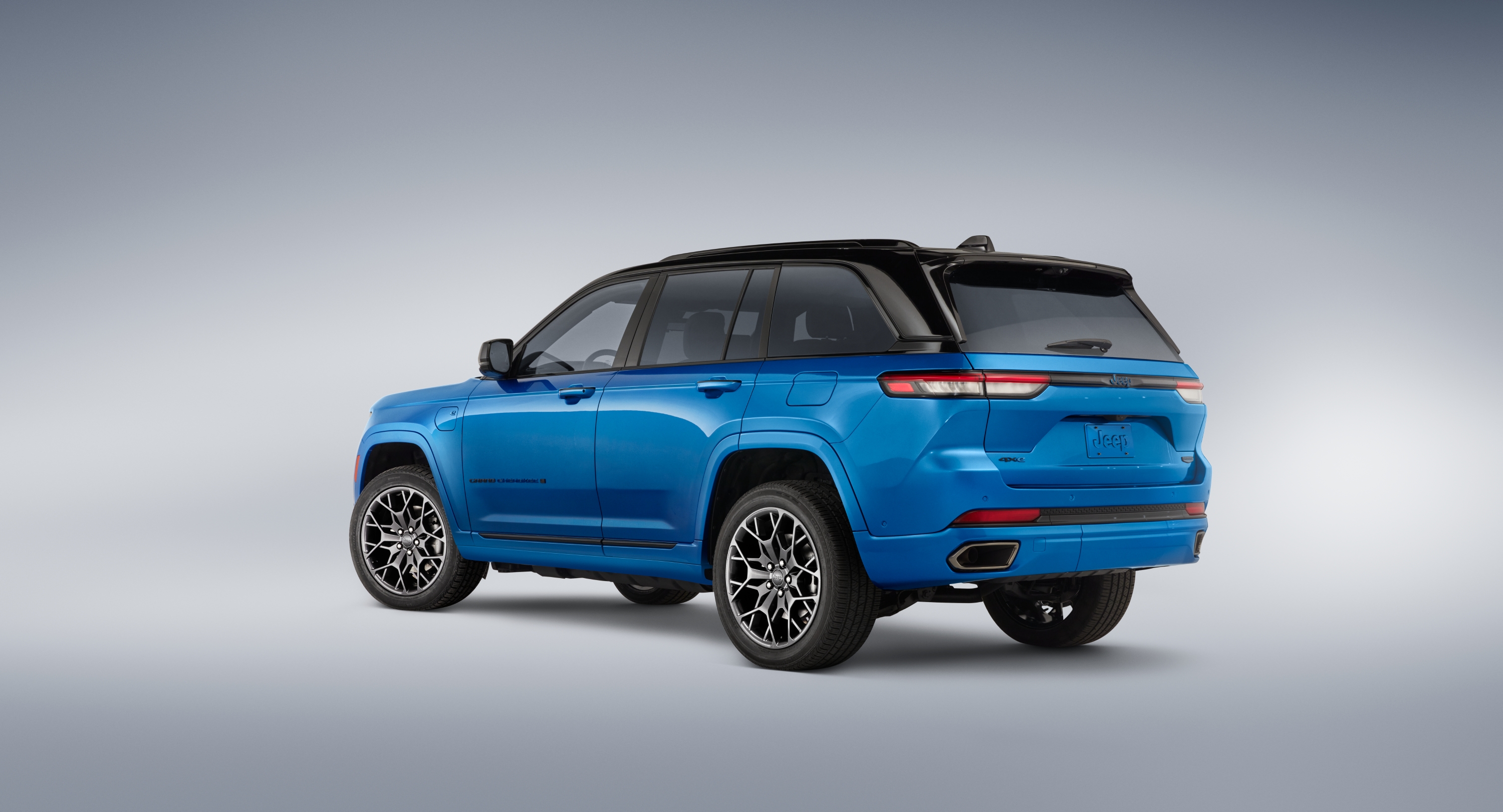
As well as the old 3.6-litre V6 lump, Jeep also offered the Grand Cherokee with a 2.0-litre plug-in hybrid four. Sales here have been woeful. Positioned as the range flagship, the Summit Reserve 4xe boasted 280kW/637Nm and fuel economy of 3.2L/100km versus 10.4L/100km for the conventional 3.6-litre cars.
So why did it flop? Issues around thermal runaway because of the compromised Samsung prismatic battery design contributed. Above all, it was just too expensive. Who wanted to pay $129,950 for a car that you needed to home charge for three hours to achieve a paltry 52km of electric range? Very few of you, it seems.
This article first appeared in the April 2025 issue of Wheels magazine.
Things we like
- More nimble steering than its predecessor
Not so much
- Kerb weight works against its performance versus rivals
‘Doing more with less’ has a lot to be said for it.
We’re forever being exhorted to reject excess and to live a right-sized life. That original phrase was credited to American futurist Richard Buckminster Fuller and it’s something that’s front of mind when driving the latest Ford Mustang EcoBoost.
Mull over the spec sheet and this is an incredibly appealing proposition. For $66,990 you get a well equipped rear-drive coupe that generates more power and torque than Porsche’s four-cylinder coupe, the $133,365 718 Cayman. Almost immediately the spectre of the eight-cylinder Mustang GT materialises.
Wasn’t 60-odd grand the price we were paying for a V8 Mustang not so many years ago? Yes, it was. But now you’ll need to spend $78,990 for a manual GT coupe and $81,990 if you want one that, like the EcoBoost, comes with a 10-speed automatic.
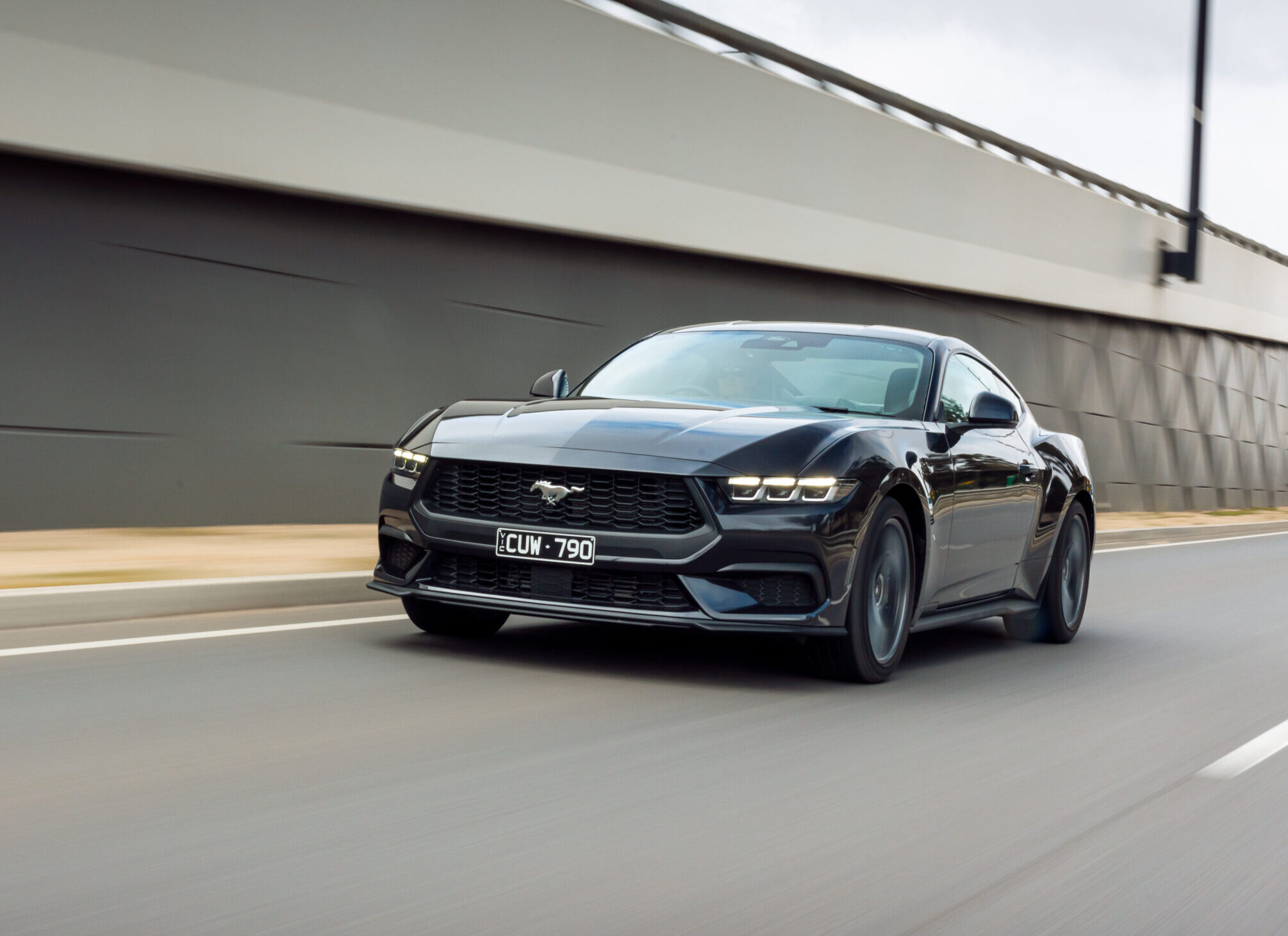
While the GT compares fairly closely on price to the likes of the Nissan Z and the Toyota Supra, it’s hard to know what to compare the EcoBoost with. It’s likely going to be a choice if you feel that you’re bored with hot hatches like the Golf R or the GR Corolla, two cars which it matches fairly closely on price.
It doesn’t take long behind the wheel of the Mustang EcoBoost to realise that it’d struggle to tag onto the back of either of those two all-wheel drive pocket rockets on any halfway challenging road. The 2.3-litre four is willing and, with 475Nm at its elbow, hardly shy of torque but the kerb weight of 1746kg contrives to take an edge off the car’s performance. A 0-100 sprint of 5.6 seconds is respectable and it even sounds reasonably good, even if some of the aural theatrics are artificial.
The engine benefits from a new twin-scroll turbocharger and both direct and multi-point injection, boosting response. The transmission slurs through ratios unobtrusively, when you’re hustling, helping to keep the car in its relatively narrow peak torque window. The old car made less in the way of twist action, but seemed to prolong the meaningful torque plateau further than this latest model. Still, that car made do with a mere 224kW whereas the current S650 model steps that up to 232kW.
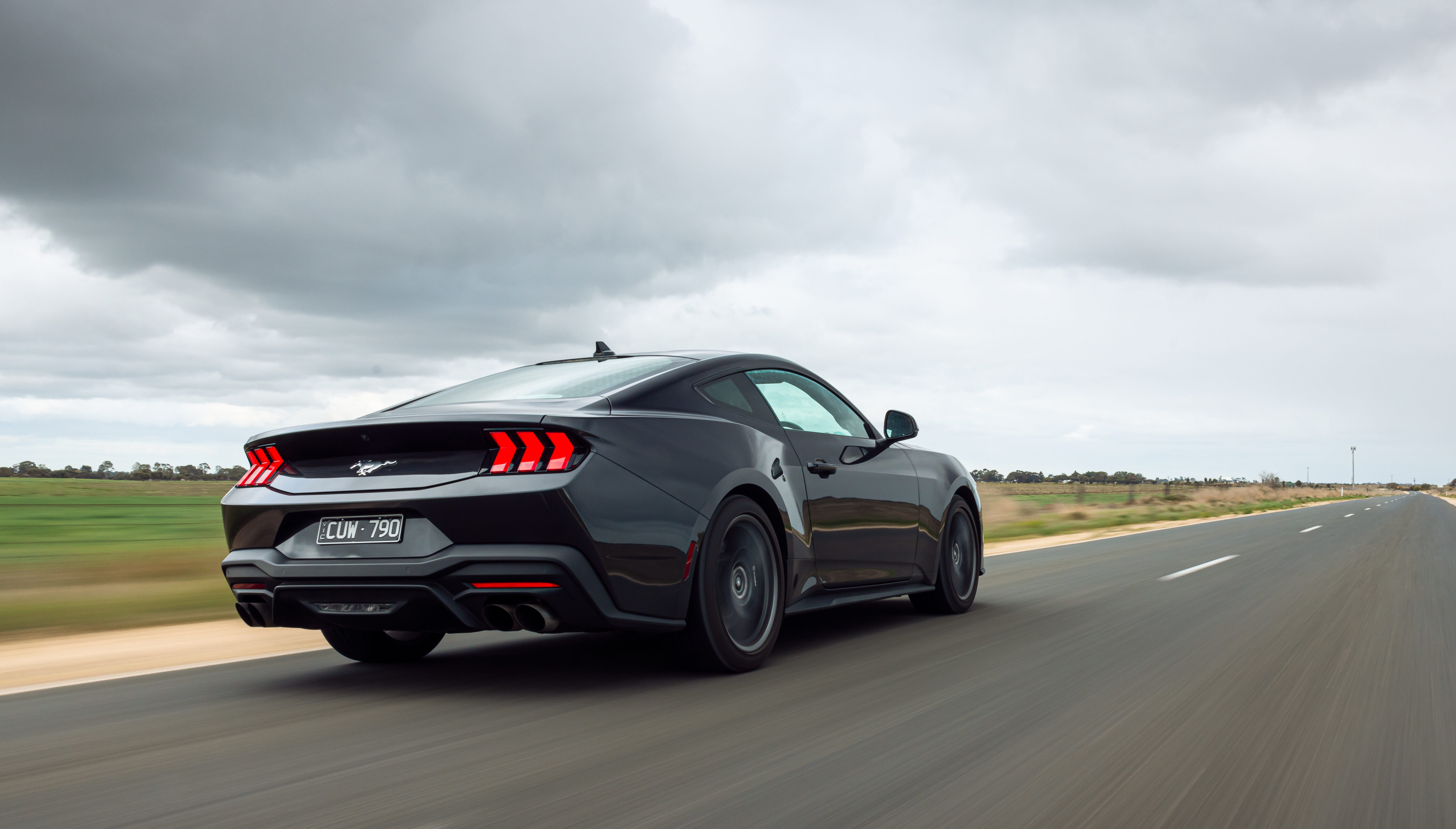
There’s a reasonable expectation that the front end would feel lighter and keener to turn in than the V8, and it does, but the difference is marginal. A fully-dressed turbo four can weigh close to a compact V8. Indeed were you to buy these powerplants as crate engines, Ford quotes 247.2kg for the EcoBoost without a flywheel and 268.5kg for the V8 with one. The standard Ecoboost flywheel assembly is 30kg. Make of that what you will.
The feeling of agility is likely down to the steering, which is night and day improved compared to the S550 predecessor, Ford having removed an anti-vibration joint from the steering column and increased the steering gearing and upgraded the rack capacity, resulting in a much nimbler feel. Damper tuning feels slicker, although the Pirelli P Zero tyre on this car (255/40 R19 all round) feels a step back from the Michelin Pilot Sport option.
Aussie cars also get the majority of the Performance Pack as standard including the brake package which comprises 390mm discs and six-piston Brembo front calipers with 355mm discs and four-pots aft. It also receives the 3.55:1 final drive, four-mode active exhaust, along with all the track apps: acceleration, brake and lap timer, line lock and the new drift brake. It’s a comprehensive package and in terms of standard gear, the V8 doesn’t get a whole lot extra.

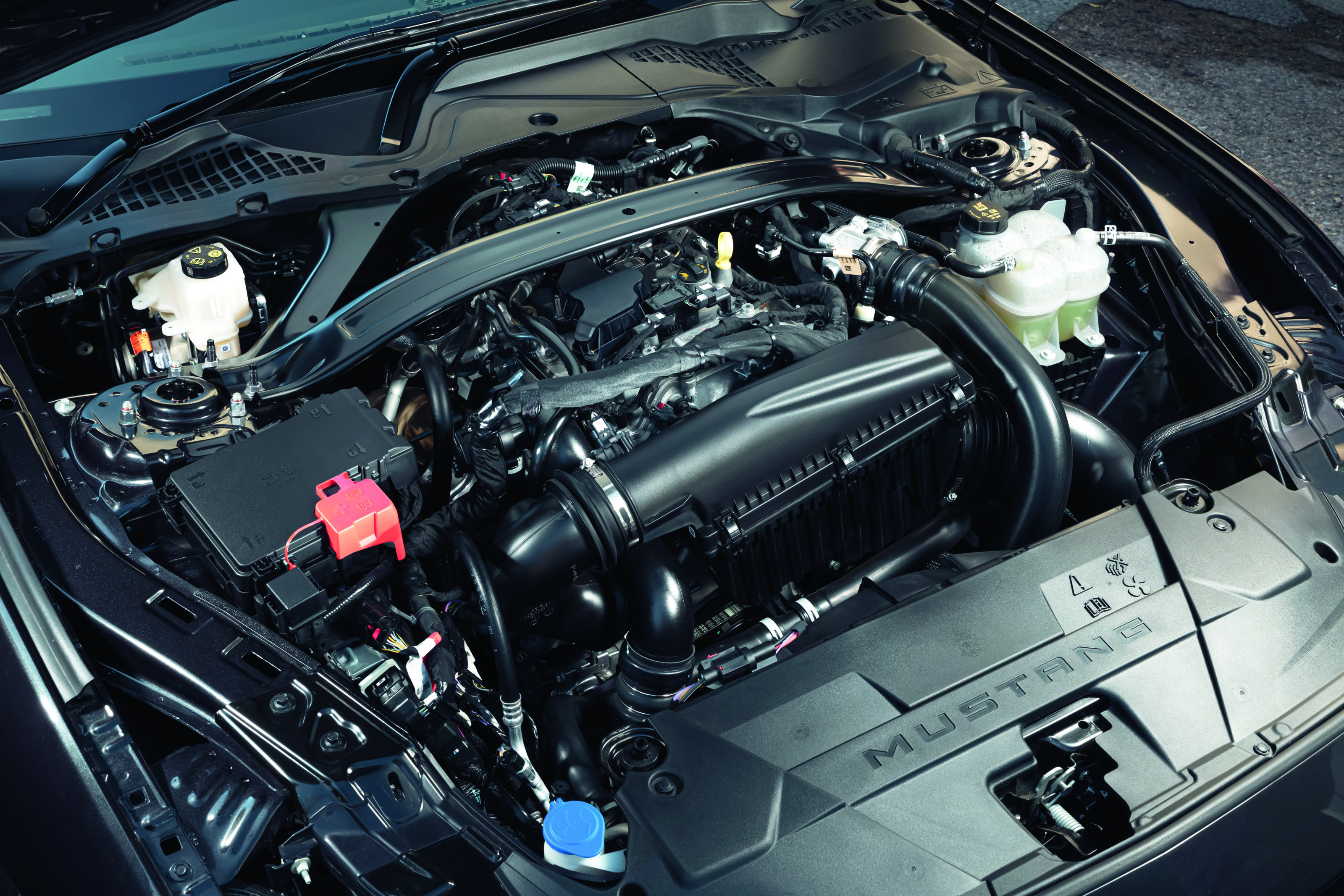
Should you buy one? Only if you’re not sold on the V8, a better car in most regards. You can do more with less, but when it comes to Mustangs, that really only applies to fuel economy. The S650 updates usefully improve the Mustang, but we can’t really make a coherent case for the EcoBoost as the thinking person’s option. It’s a good sports coupe, but it lacks the soul of the V8 and, among car enthusiasts at least, that counts.
Specifications
| Model | Ford Mustang EcoBoost coupe |
|---|---|
| Engine | 2261cc 4cyl, dohc, 16v, turbo |
| Max power | 232kW @ 5500rpm |
| Max torque | 475Nm @ 3000rpm |
| Transmission | 10-speed auto |
| Economy | 9.4L/100km |
| 0-100km/h | 5.6sec |
| Price | $66,990 |
| On sale | Now |
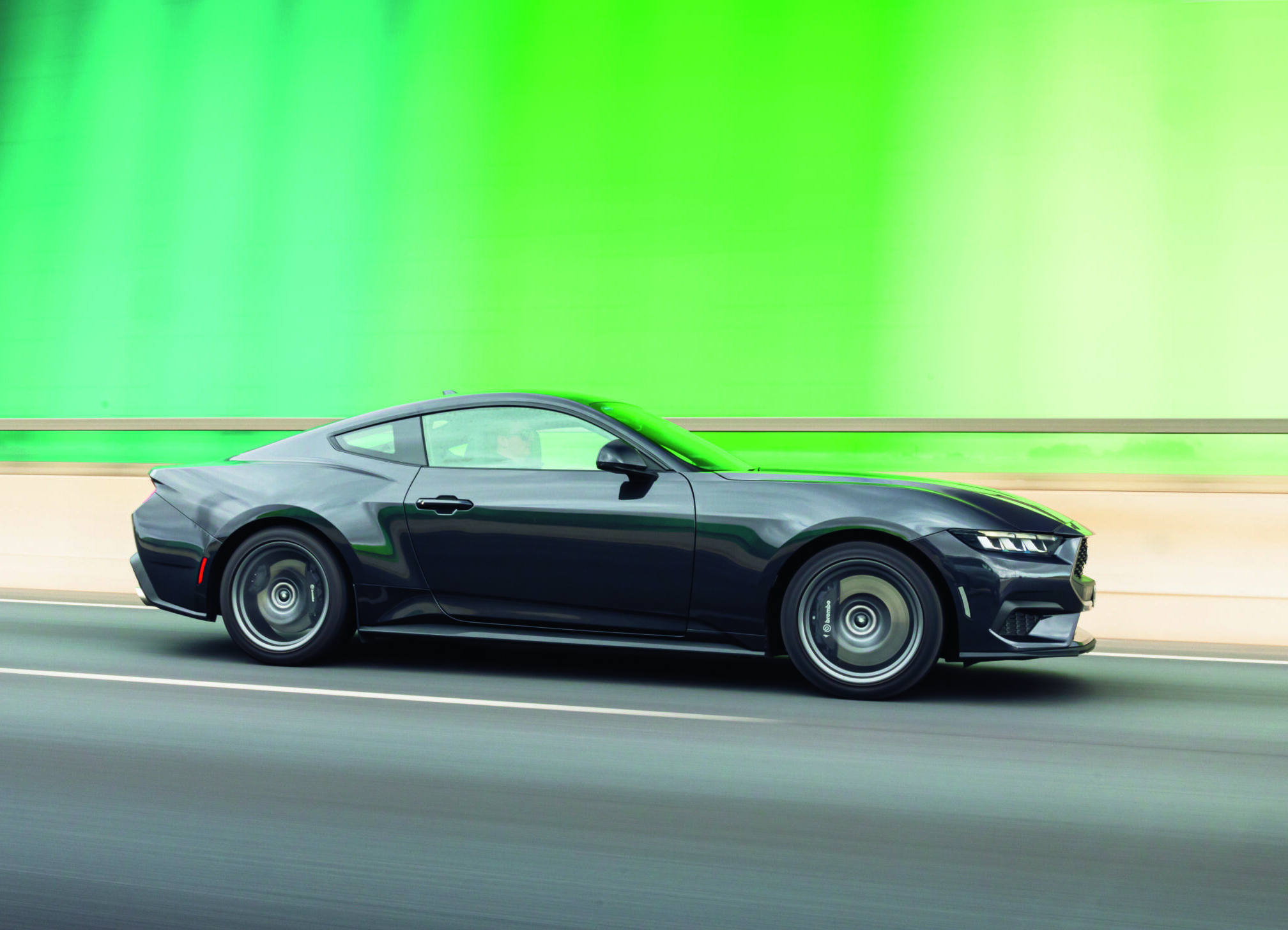
This article first appeared in the April 2025 issue of Wheels magazine.
With the 2025 Easter period coming just days before ANZAC Day on April 25, many Australians are planning an extended break, prompting authorities to issuing warnings about the roads to try and prevent holiday tragedies.
According to Yahoo!, new data has found that more than a quarter of Australians plan to take off the three working days between Easter Monday and ANZAC Day – April 21 to 25 – and almost two thirds of that group plan on travelling, including 77 per cent choosing to drive.
Combined with the recent drop in interest rates, that means a significant boost in domestic tourism, particularly in areas such as south-east Queensland and northern NSW as they continue to recover from Cyclone Alfred.
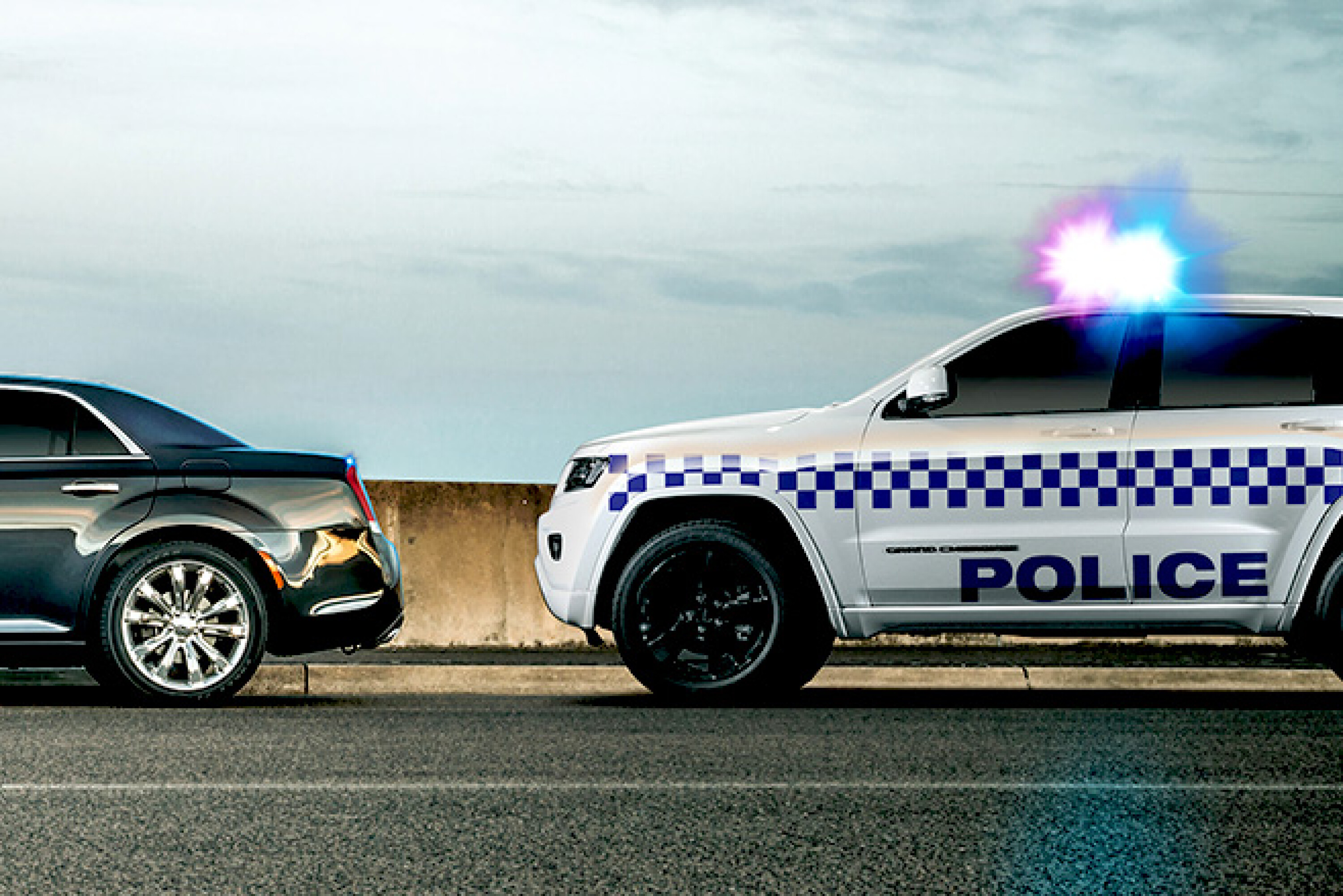
The NRMA’s Peter Khoury warns that with so many people planning a getaway, drivers must take extra precautions to cater for the drastic increase in vehicles on the road.
“We’re expecting traffic to ramp up as we get closer to Easter, particularly as the rest of the states fall into their school holiday period,” he said. “The road toll is up in a number of states, certainly in NSW, which is very worrying. We want to see that reverse, and this is going to be a critical period in the next few weeks, as more families go on holidays.”
In the 12 months to the end of February 2025, Australia’s national road toll sits at 1,292 deaths – an increase of 1.6 per cent compared with the same period in 2024.
Double demerits will be in force in NSW, the ACT and Western Australia from April 17 to April 21. Queensland police will also be broadening its roadside breath and drug testing as part of ‘Operation X-Ray Easter’, coinciding with the April school holidays from April 4t to 21.
So far this year, Queensland Police have conducted more than 500,000 random breath tests and more than 14,000 roadside drug tests, detecting more than 9500 motorists over the legal alcohol limit and almost 3000 positive indications that motorist have driven under the influence of illicit drugs. According to Queensland Police, X-Ray Easter will expand that significantly.
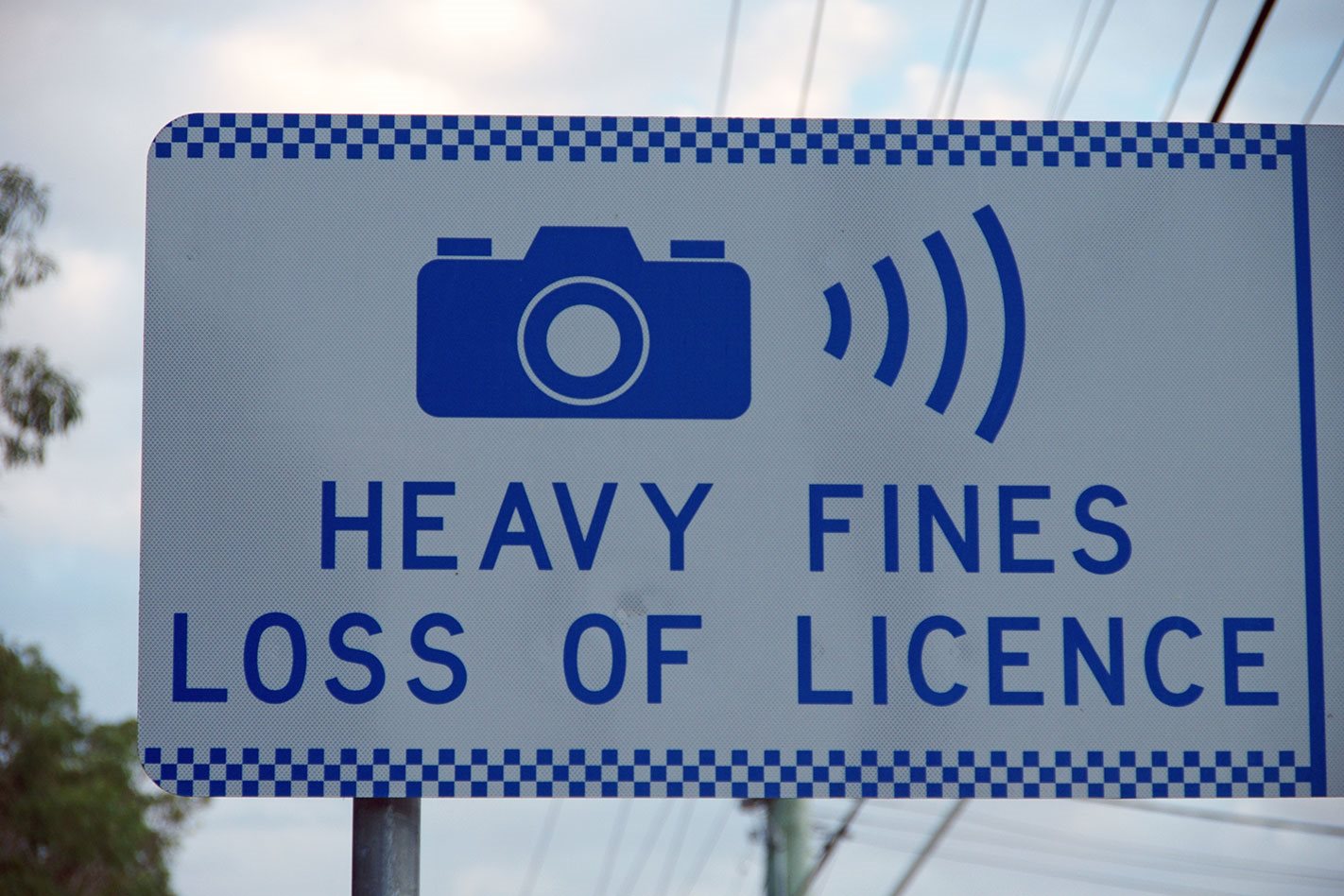
Queensland Police Road Policing and Regional Support Command Acting Chief Superintendent Garrath Channells said police will have a strong presence across the state, ensuring that drivers make safe choices.
“Easter is a time for families and friends to create lasting memories. We do not want to see anyone’s holiday period end in tragedy,” Acting Chief Superintendent Channells said. “History tells us Easter is a particularly dangerous time on our roads, with families travelling longer distances, often on unfamiliar routes.
Queensland Police are also urging motorists to avoid the “fatal five” – that’s drink and drug driving, speeding, fatigue, distraction, and seatbelt misuse –– to prevent holiday tragedies from occurring.
Easter holiday penalties – state by state
| NSW | Double demerits: Thurs Apr 17-Mon Apr 21 |
|---|---|
| ACT | Double demerits: Thurs Apr 17-Mon Apr 21 |
| Queensland | No specific double demerit window, but year-round enforcement targets repeat high-risk offences |
| Victoria | Victoria does not have a double demerit points scheme at any time of the year, including public holidays and long weekends |
| Western Australia | Double demerits: Thurs Apr 17-Mon Apr 21 |
| Tasmania | Tasmania does not have a double demerit points scheme at any time of the year, including public holidays and long weekends |
| South Australia | South Australia does not have a double demerit points scheme at any time of the year, including public holidays and long weekends |
| Northern Territory | Northern Territory does not have a double demerit points scheme at any time of the year, including public holidays and long weekends |
The plug is being pulled on the electric car.
European manufacturers are scaling back their EV ambitions in response to a collapsing market. In Germany, EV sales plunged 27.4 percent in 2024. Porsche, Lotus, Volvo, Bentley, Audi, Aston Martin have each announced some sort of delay to their EV plans and even renewed investment in combustion engines and hybridisation. Geopolitical tectonic plates are also starting to shift against the EV.
While it’s still early days, a rollback of the EV rollout could amount to an apparent win for Western auto industries, a win for the combustion engine (which I personally love, just as you do) and a loss for China, where the EV continues to boom.
But it would feel like another loss of other sorts – and a great pity, if you ask me. I like electric cars. They make increasing sense to my prudent, middle-aged Australian mind. I like driving them.

I don’t love the extra weight, but that’s probably unsurprising given I swap into a 900kg Toyota at least once a week. But EVs are getting lighter; a rear-drive Tesla Model 3 is ‘just’ 1761kg with a sensible 513km WLTP range. The low centre of gravity in such cars makes the heft feel somehow less. EVs should get lighter with time.
You can hoon around in an EV without having to wait for an engine to warm up. I like their stealthy briskness, letting you zip around urban areas at night without feeling like the bloke who just woke up some other bloke’s baby.
EVs are great for daily duties. Cabin pre-heating or pre-cooling is a game-changer. You can also leave your dog in the car on a hot day with the AC going and doors locked.
EVs are cheap to run. Forget the $1500 wallbox – if you’re the average Australian who commutes 31.2km each day, a powerpoint is fine. Program the car to charge between midnight and 6am on an EV electricity plan, and you could cover about 75km for $1 in something like a Hyundai Ioniq 5 RWD. A 7L/100km new SUV at $1.93/litre is more like $10 for the same distance. Charge the EV at work on the boss’s dime and you’re laughing.
More EVs will lead to a proliferation of used EV batteries – a disaster, right? More like an ideal scenario for Australia which increasingly has more household solar than it knows what to do with. Already enterprises are repurposing old EV batteries for household use. No electricity bill at all, and not a single lump of coal burned? Sounds okay to me.

Many expensive-sounding studies have demonstrated that EVs are far from from “zero emission” but even in worst-case scenarios, they still release less CO2 than combustion cars. The International Energy Agency says a medium EV, when fully recharged with 90 percent coal-fired electricity across a 15-year lifetime, will produce 16 percent less overall CO2 than an equivalent combustion car – including manufacturing. That includes the assumption that no new renewables are added to the grid in that time.
Even if charged only with coal, EVs shift their exhaust fumes to some distant power station, rather than within easy inhalation distance of, you know, your lungs. And if you don’t ‘believe’ in man-made climate change, what if you’re wrong? Surely there’s no harm in releasing considerably less CO2 into the atmosphere just in case?
I accept EVs aren’t perfect. Using children to mine the cobalt, in Africa, is not ideal, to say the least. If you live rural, need to tow or regularly drive long distances, a PHEV is better.
Depreciation, however, remains the hairiest number on my EV spreadsheet, but that will surely improve in time. If the lights don’t go out, that is. It would be a true shame if they did.
This piece originally appeared in the March 2025 issue of Wheels magazine.
Rapidly expanding brand BYD has confirmed earlier rumours it would make a significant change to its product warranty for Australian customers, expanding its six-year/150,000km coverage from bumper-to-bumper and adding an 8-year/160,000 km battery warranty.
The new arrangement will apply to all models and is backdated to cover vehicles from BYD’s first Australian deliveries in August 2022.
Previously the brand’s six-year warranty excluded certain parts, with elements such as the infotainment touchscreen and shock absorbers covered only for three years or 60,000km (whichever comes first). Other parts such as lights, suspension and ball joints are covered were covered for four years or 100,000km.

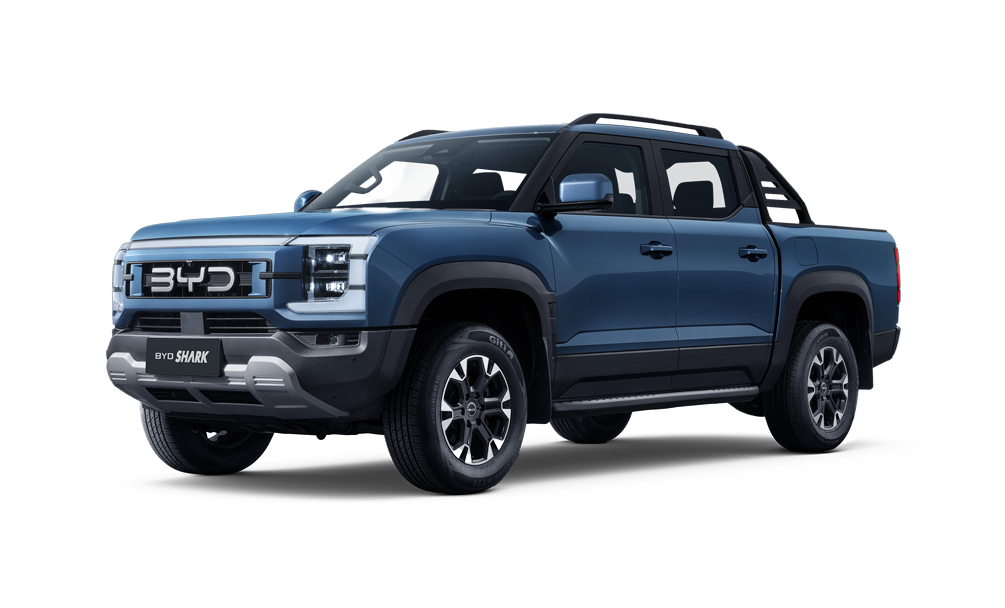
BYD made the announcement as it said it had marked over 40,000 sales in Australia.
The warranty includes the Power Battery pack and Drive Unit which are covered for a period of eight years or 160,000 km, whichever occurs first, while all other components are subject to a six-year / 150,000km warranty.
BYD also announced its SEALION 7, its electric SUV launched here in February, had achieved a five-star ANCAP, joining the much-hyped BYD SHARK 6.
Further information about BYD’s enhanced warranty can be found here.
Smart has revealed the new #5 Brabus, which will sit atop the brand’s lineup as a very quick version of its new mid-size SUV. Capable of a 3.8-second 0-100km/h sprint using launch control, the #5 Brabus makes a massive 475kW of power – or a full 165kW more than the next #5 below it.
That’s again thanks to a dual-motor all-wheel drive drivetrain, which is fed by a large 100kWh battery that enables a 540km WLTP range – or 200km less than the regular #5 thanks to the extra performance.
Thanks to its 800-volt architecture, the #5 Brabus can charge at up to 400kW for a 10 to 80 per cent charge in as little as 18 minutes.
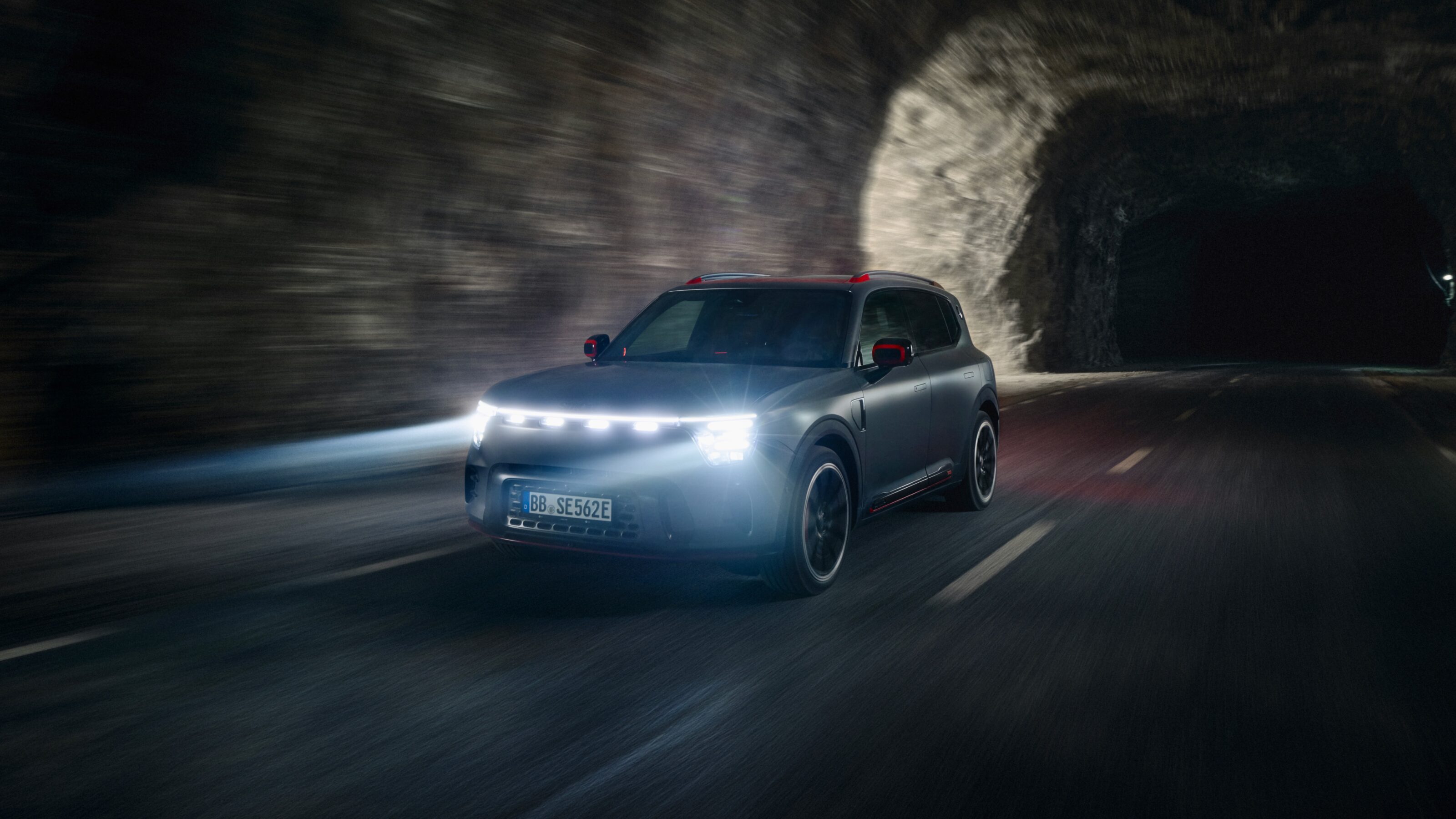
On the exterior of the #5 Brabus are new 21-inch ‘Monoblock Z’ wheels, sportier styling pieces and red colouring on the brake callipers, mirror caps, side skirt and rear trim strip.
On the inside, the #5 Brabus features the same sporty details as the #1 and #3 Brabus such as suede and microfibre upholstery, heated and ventilated front sports seats and red stitching, while the suede steering wheel also sports illuminated Brabus badging.
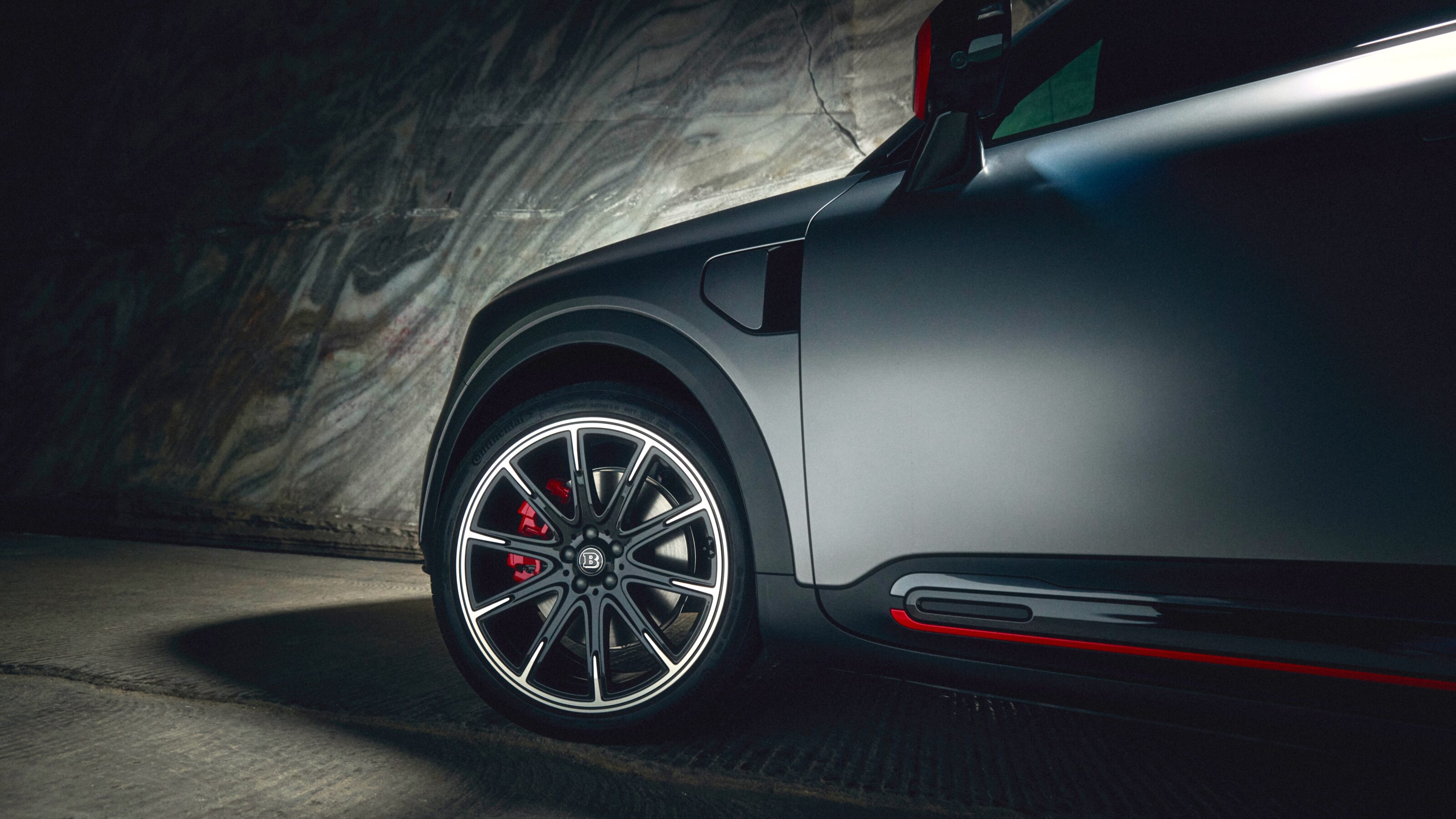

The #5’s infotainment is handled by two 13-inch OLED displays with one dedicated to the front
passenger, while a 20-speaker Sennheiser sound system provides 2,000 watts of audio. 256-colour LED ambient lighting also features.
European pricing for the #5 Brabus starts at €60,900 (A$108,105) and deliveries there will commence later in the year.
Currently, the Smart #5 Brabus is yet to be confirmed for Australia, though the regular #5 will go on sale locally in late 2025.
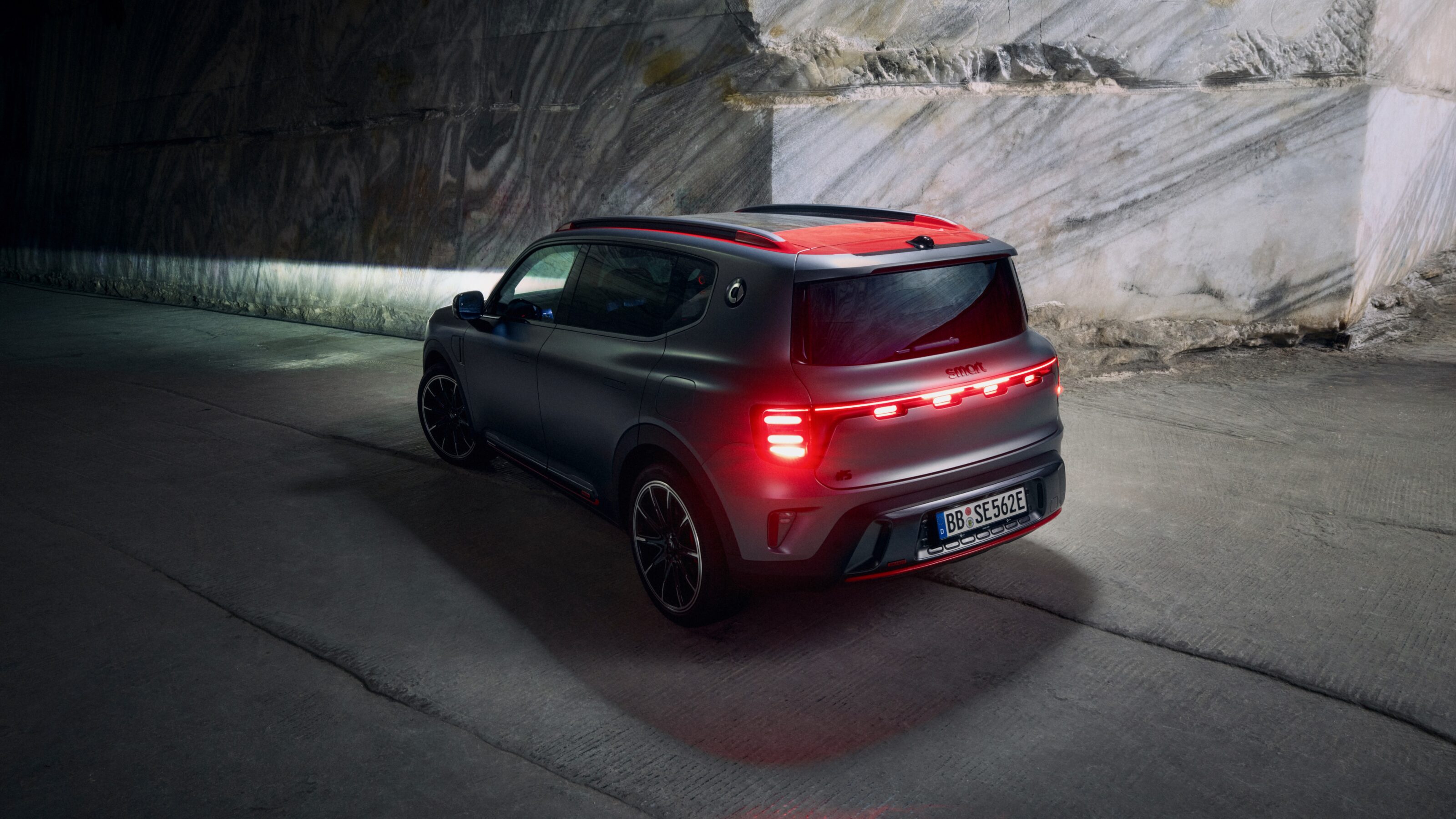
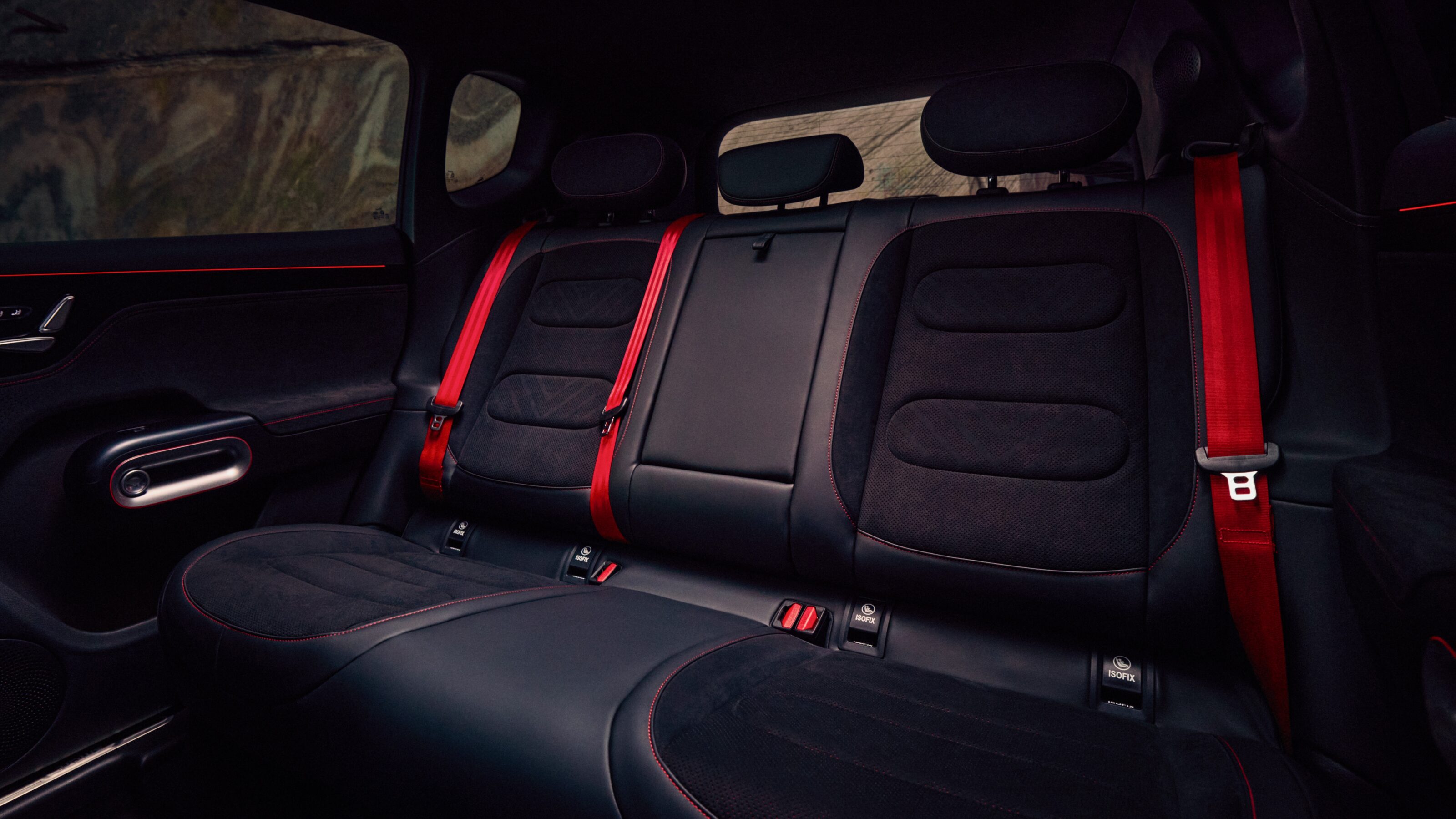
Only a few months after launching the CLE 53 in coupe form, Mercedes-Benz Australia has
announced local pricing and specifications for the CLE 53 Cabriolet, which is now available to order.
Priced from $175,600 plus on-road costs – or $16,700 more than the 53 coupe and $38,000 more
than the four-cylinder CLE 300 convertible – the AMG CLE 53 Cabriolet uses the same
turbocharged six-cylinder engine and 48V mild-hybrid drivetrain as the coupe.
Making 330kW of power and up to 600Nm of torque on overboost, the CLE 53 Cabriolet hits
100km/h in just 4.2 seconds – only 0.2 seconds slower than the lighter coupe. Power is sent to all
four wheels through a nine-speed automatic transmission.
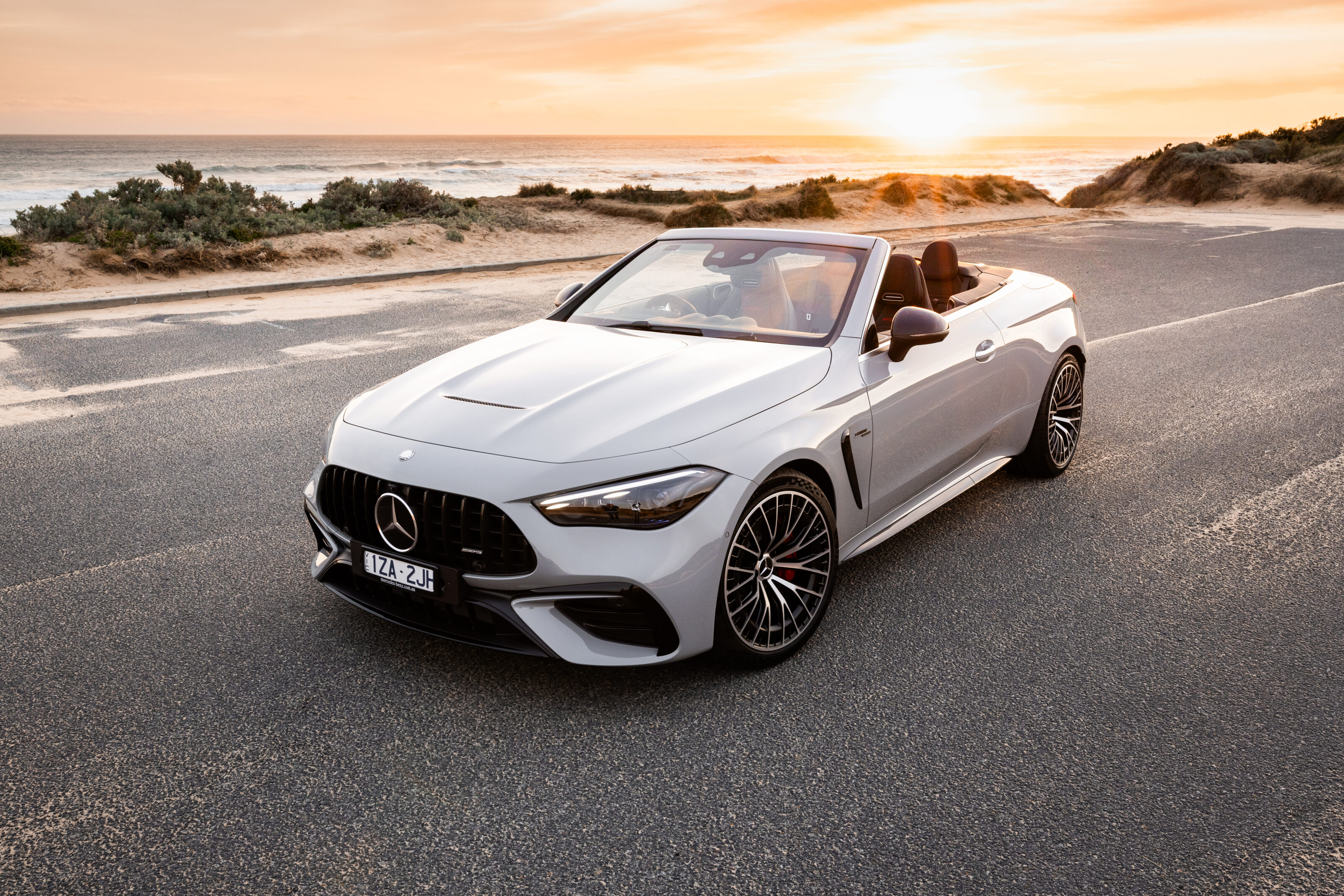
Standard equipment on the CLE 53 includes 20-inch alloy wheels, automatic all-LED exterior
lighting, adaptive damping, rear-axle steering, the AMG Exterior Night Package 1 and 2, keyless
entry and start, and the company’s ‘Aircap’ electric wind deflector and the ‘Airscarf’ neck-level
heating and ventilation.
Inside features black leather upholstery with red stitching, carbon interior trim, a Nappa leather
steering wheel, 64-colour ambient lighting, a 12.3-inch digital driver’s display, an 11.9-inch
touchscreen with wireless Apple CarPlay and Android Auto, digital radio and a Burmester sound
system.
Safety equipment includes 10 airbags, autonomous emergency braking with pedestrian and cyclist
detection, adaptive cruise control with stop and go functionality, blind-spot monitoring with front and
rear cross-traffic alert, active speed limit assist, safe exit warning, lane keeping assistance,
adaptive lane guidance, traffic sign recognition, a 360-degree camera, front and rear parking
sensors and adaptive high beam.
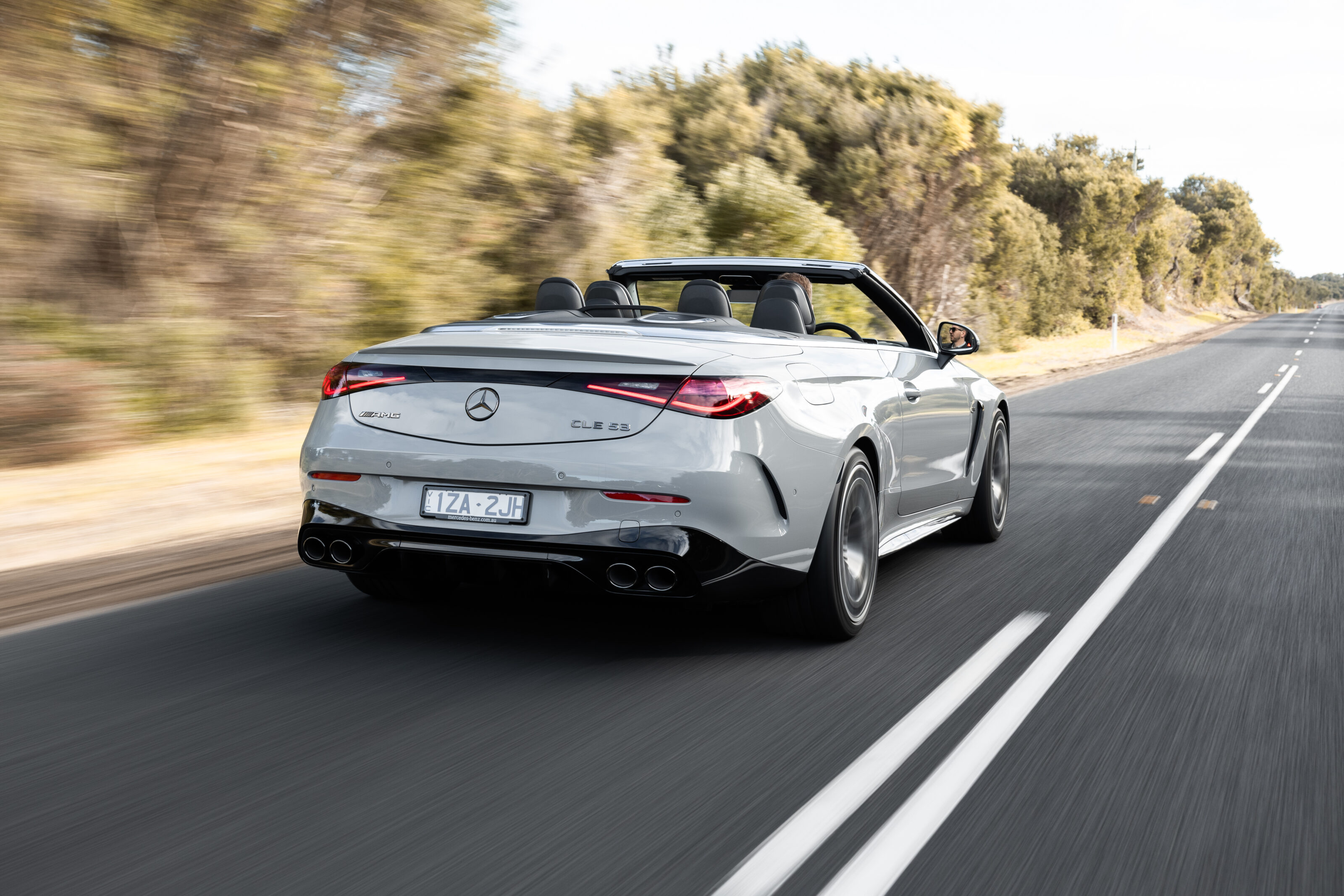
Buyers wanting to personalise their CLE 53 Cabriolet can choose the $2,100 Plus Package with
heated and ventilated front seats, memory parking assistance, air-balance package and the
energising package plus.
The $8,900 Carbon Package is also available and includes carbon fibre trim on the steering wheel,
dashboard and doors, front splitter, mirror caps, lip spoiler and side sills.
AMG Performance Seats are also available for an extra $5,400.
Mercedes-AMG CLE 53 pricing (plus on-road costs):
| Coupe | $158,900 |
|---|---|
| Cabriolet | $175,600 |
The Mercedes-AMG CLE 53 is now available to order, with local deliveries commencing soon.